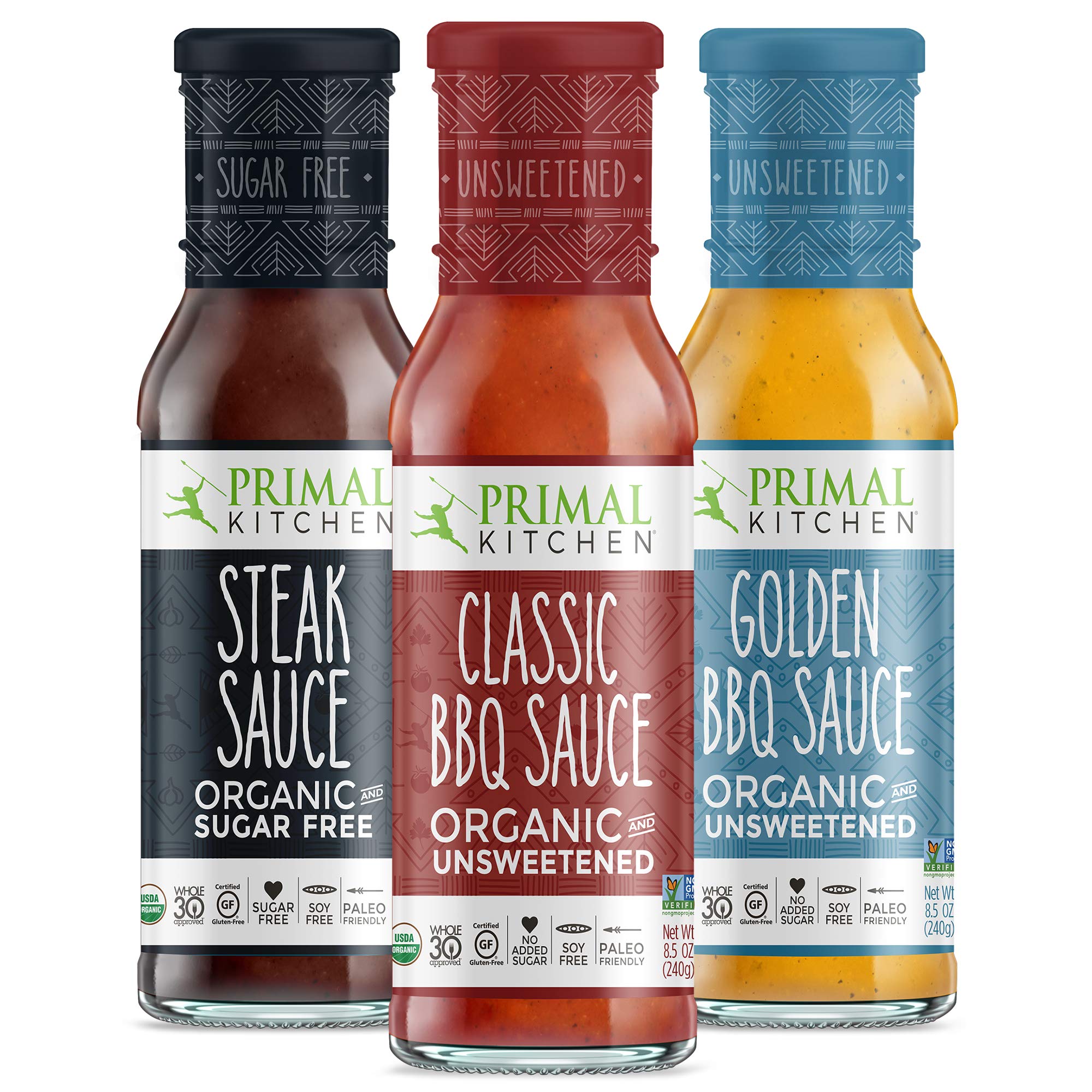Is Soy Paleo? A Comprehensive Guide to Paleo Substitutions [Infographic]
Discover the answer to “Is soy paleo?” and explore a comprehensive guide to Paleo substitutions with an informative infographic. Learn what to eat and what to avoid on the Paleo diet.
Understanding the Paleo Diet
The Paleo diet is a way of eating that aims to mimic the diets of our ancient ancestors. The concept behind this diet is that the “modern diet” has been influenced by agricultural and commercial industries to include foods that are not the most appropriate, natural, or healthy options. By “getting back to our roots” with a diet that consists of natural, unrefined foods, we can provide our bodies with optimal nutrition and health.
Paleo Food List: What to Eat and What Not to Eat
When following the Paleo diet, there are certain foods that are considered acceptable, while others are off-limits. Here’s a quick overview of what you can and cannot eat on the Paleo diet:
What to Eat on Paleo:
- Fruits (e.g., bananas, apples, oranges)
- Nuts (e.g., macadamias, almonds, pecans)
- Vegetables (e.g., broccoli, spinach, tomatoes)
- Seeds (e.g., sunflower, pumpkin, pomegranate)
- Proteins (e.g., pork, eggs, beef, seafood, poultry, wild game)
- Healthy Fats (e.g., olive oil, coconut oil, grass-fed butter, ghee, lard)
What Not to Eat on Paleo:
- Most dairy products (e.g., milk, cheese, sour cream, yogurt, cream)
- Legumes (e.g., peanuts, soy, beans)
- Grains (e.g., wheat, oats, rye, corn, barley, brown rice)
- Highly processed oils (e.g., canola oil, vegetable oil, margarine)
- Sugary snacks and drinks (e.g., sodas, some fruit juices, packaged snack foods)
- White potatoes (some argue they are acceptable in moderation, while others say to avoid them completely)
Paleo Substitutions Guide and Infographic
Now that you know what foods are on and off the table, you can start exploring Paleo-friendly substitutes. Below, we’ve compiled a list of off-limits foods and their Paleo-approved alternatives, along with a handy infographic for easy reference.
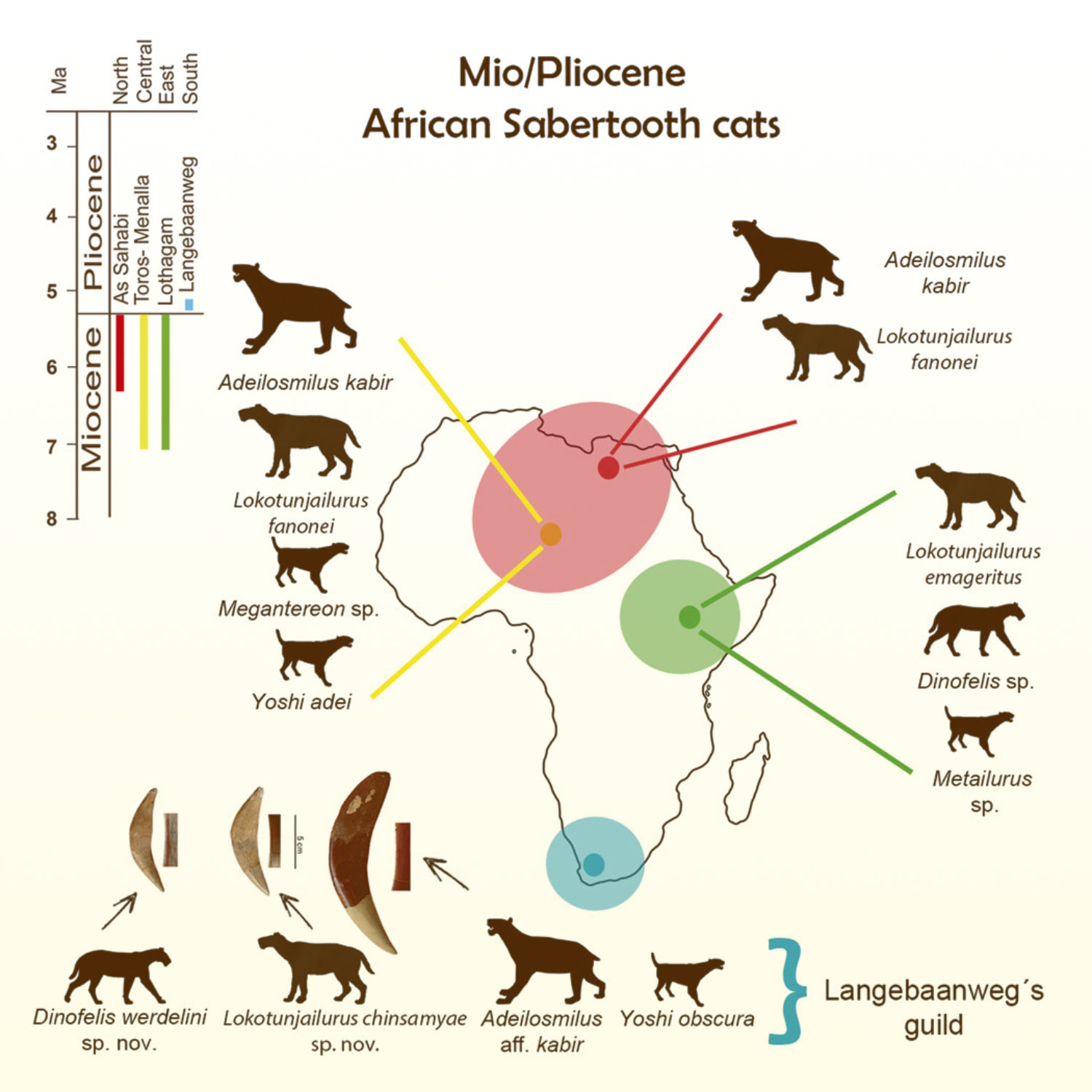
White Potato Substitutes for Paleo:
- Sweet potatoes
- Cauliflower
- Turnips
- Celeriac
Dairy Substitutes for Paleo:
There are a variety of dairy-free products on the market that can serve as Paleo-friendly alternatives, such as:
- Nut-based milks (e.g., almond, cashew, coconut)
- Coconut-based yogurt
- Nut-based cheeses
Grain, Carb, and Legume Substitutes for Paleo:
Since the Paleo diet eliminates grains, carbs, and legumes, here are some creative substitutes to use in their place:
- Corn – Substitute with tomatoes or finely chopped vegetables (e.g., mushrooms, carrots, bell peppers)
- Noodles or pasta – Use spiralized veggie noodles (e.g., zucchini, sweet potato, butternut squash, carrot), spaghetti squash, kelp noodles, or shirataki (yam) noodles
- Rice or other grains – Use cauliflower rice or shredded or finely chopped vegetables
Navigating the Paleo Pantry
The good news about the Paleo diet is that since it focuses on simple whole foods, most of the ingredients you’ll need are available at your local grocery store or farmer’s market. However, if you have trouble tracking down a specific item, you can check out online stores like Thrive Market to stock up on Paleo substitutes and other popular Paleo ingredients.

Infographic: Guide to Paleo Substitutes
For easy reference, we’ve created a handy infographic that visually showcases the Paleo substitutions discussed in this guide. Feel free to print it out and hang it in your pantry or kitchen for quick access when meal planning or cooking.
Remember, the Paleo diet is all about getting back to the basics and nourishing your body with natural, whole foods. By exploring these Paleo-friendly substitutions, you can easily adapt your favorite recipes and create delicious, nutrient-dense meals that align with the Paleo lifestyle.
Is Soy Paleo?
Soy is not considered a Paleo-approved food. Soybeans and soy-based products, such as tofu, tempeh, and soy sauce, are classified as legumes, which are off-limits on the Paleo diet. While some argue that fermented soy products like miso and natto may be acceptable in moderation, the general consensus is to avoid soy entirely when following a strict Paleo diet.
Conclusion
In summary, the Paleo diet emphasizes consuming whole, unprocessed foods that our ancient ancestors would have had access to. By understanding the Paleo food list and exploring the wide range of Paleo-friendly substitutes, you can easily adapt your favorite recipes and create delicious, nutrient-dense meals that support your Paleo lifestyle. Remember to always check the ingredients and opt for natural, whole-food options whenever possible.

Guide to Paleo Substitutions [Infographic]
Learn what to use when you need a delicious Paleo-friendly food option in the Paleo Substitutions Guide below!
- By Taylor Isaac
- April 16, 2018
Whether you’re looking for quick substitutes or want to add new foods to your meal-making arsenal, this Paleo Substitutions Guide (and handy infographic!) will help you swap out no’s for yes’s with ease.
But before we get into the Paleo substitutes, let’s do a quick refresh on the diet itself.
What is the Paleo Diet?
In essence, the Paleo diet is a way of eating that’s similar to how ancient humans ate. In other words, if our ancient ancestors were able to hunt or gather it, we can (and should) eat it.
The concept behind this is that the “modern diet” has been influenced by agricultural and commercial industries to include foods that are not the most appropriate, natural, or healthy options, and that by “getting back to our roots” with a diet that consists of natural, unrefined foods, we can provide our bodies optimal nutrition and health.
Paleo Food List: What to Eat and What Not to Eat
When trying to stick to a “caveman diet,” as you might expect, there are a lot of foods that are off limits, particularly those that are sugary, refined, or overly processed. So to make cutting through the what-can-I-have clutter as easy as possible, here’s a quick look at what you can and can’t eat on the Paleo diet:
What to Eat on Paleo:
- Fruits. Bananas, apples, oranges, etc.
- Nuts. Macadamias, almonds, pecans, etc.
- Vegetables. Broccoli, spinach, tomatoes, etc.
- Seeds. Sunflower, pumpkin, pomegranate, etc.
- Proteins. Pork, eggs, beef, seafood, poultry, wild game, etc.
- Healthy Fats. Olive oil, coconut oil, grass-fed butter, ghee, lard, etc.
What Not to Eat on Paleo:
- Some dairy. Milk, cheese, sour cream, yogurt, cream, etc.
 Dairy products such as grass-fed butter and ghee are allowed on Paleo.
Dairy products such as grass-fed butter and ghee are allowed on Paleo. - Legumes. Peanuts (and peanut butter), soy, navy beans, black eyed peas, kidney beans, pinto beans, etc.
- Grains. Wheat, oats, rye, corn, barley, brown rice, bread crumbs, etc.
- Highly processed oils. Canola oil, vegetable oil, margarine, etc.
- Sugary snacks and drinks. Sodas, some fruit juices, packaged snack foods, etc.
- White potatoes. Some argue that, in moderation, white potatoes are acceptable to eat on a Paleo diet, while others say to avoid them completely. (Either way, we include substitutes for them below.)
Paleo Substitutions Guide and Infographic
Now that you know what foods are on and off the table, you’re one step closer to Paleo success! Next up, the substitutes.
Below, we’ve compiled a list of off-limits foods to show you how to creatively swap them for delicious Paleo-friendly options. For easy reference, print out the handy infographic below to hang in your pantry or kitchen!
Infographic
Guide to Paleo Substitutes
This Paleo ingredient substitutions guide shows you what to use when you need delicious Paleo-friendly foods.
The good news about the Paleo diet is that since it focuses on simple whole foods, most of the ingredients you’ll need are available at your local grocery store or farmer’s market; you don’t have to add a lot of specialty items to your pantry.
But if you do have trouble tracking down an item, we recommend checking out online stores like Thrive Market to stock up on substitutes as well as popular Paleo ingredients like bone broth, avocado mayonnaise, and coconut aminos. For a list of Paleo pantry essentials, check out our guide.
White Potato Substitutes for Paleo
Like we mentioned above, white potatoes are a bit controversial. Whether you eat them or not, here’s what to use if you need a substitute:
- Sweet potatoes
- Cauliflower
- Turnips
- Celeriac
Dairy Substitutes for Paleo
There are a ton of dairy-free products on the market, from yogurt to milk, that make swapping out dairy for Paleo alternatives quick and easy.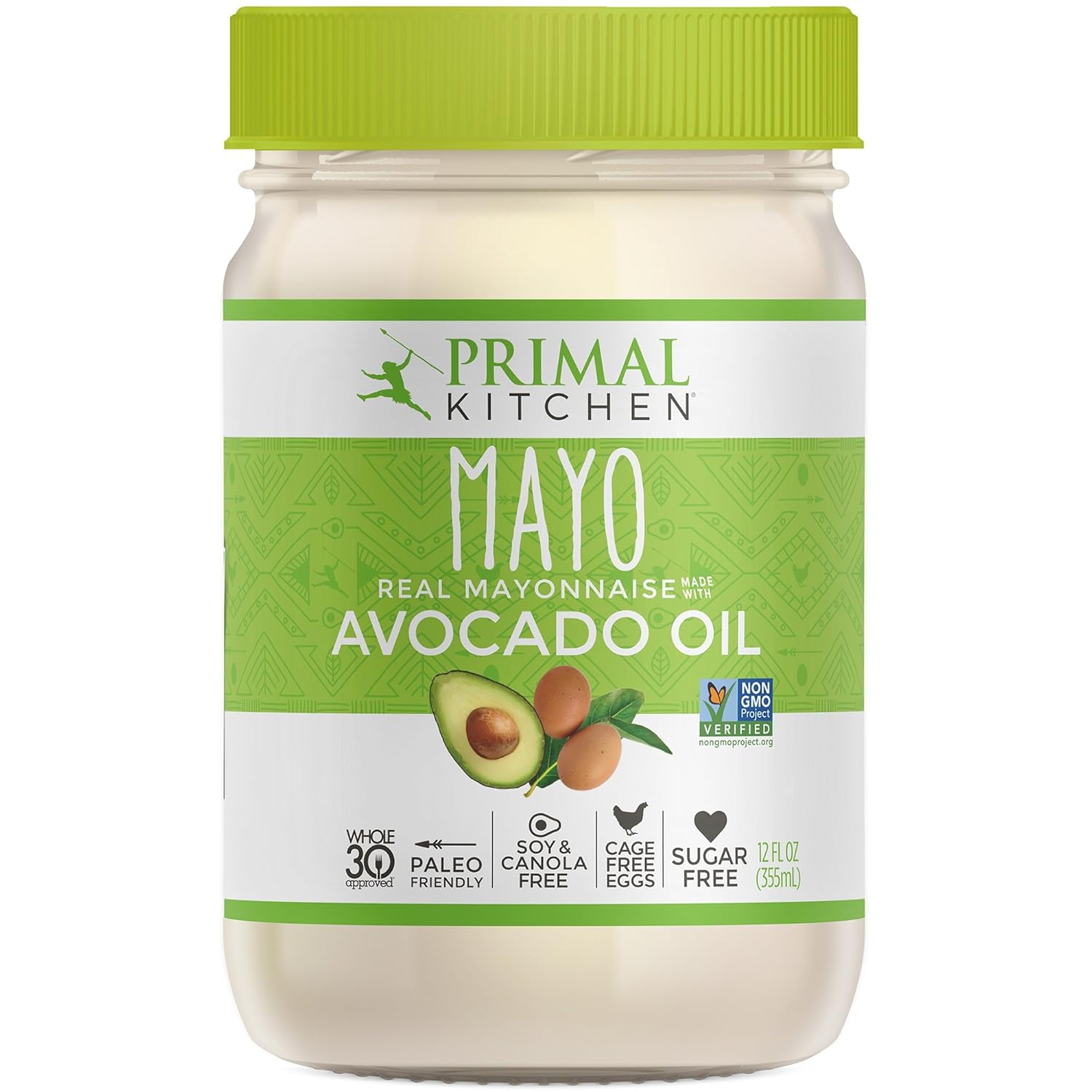 Here’s what to use when you need a Paleo dairy substitute:
Here’s what to use when you need a Paleo dairy substitute:
Grain, Carb, and Legume Substitutes for Paleo
The USDA’s Food Pyramid Guide recommends eating 6 to 11 servings of cereal, bread, pasta, or rice a day — the largest serving size of any food group. On the Paleo diet, it’s zero. Combine that with no legumes and you’ve got perhaps the most challenging pillars of Paleo. Luckily, there are some creative solutions. Here’s what to use when you need a substitute:
- Corn. Tomatoes or vegetables chopped small (mushrooms, carrots, bell peppers).
- Noodles or pasta. Spiralized veggie noodles (zucchini, sweet potato, butternut squash, carrot), spaghetti squash, kelp noodles, or shirataki (yam) noodles.
- Rice or other grains. Cauliflower rice or plantains.
- Flour. Coconut flour, almond flour, arrowroot powder, or tapioca flour.
- Breadcrumbs. Flax meal, chia seeds, ground pepitas, ground nuts, almond flour.

- Tortillas. Coconut-based tortillas, lettuce or cabbage wraps.
- Pizza crust. Cauliflower crust, portobello mushrooms, zucchini boats, Italian eggplant sliced into rounds, or sweet potatoes sliced into rounds.
- Beans. Vegetables chopped small (mushrooms, carrots, bell peppers) or proteins like chicken and eggs.
- Edamame. Chopped green beans or vegetables chopped small (broccoli, bok choy, peas).
- Peanuts. Cashews, pistachios, pine nuts, or walnuts.
*Note: Wheat gluten is often found in foods you would never expect to find it in. So it’s a good idea to check your food labels when you’re just starting the Paleo diet to avoid wheat additives and sneaky soy.
Flavoring and Condiment Paleo Substitutes
*Note: Although many Paleo ingredients overlap with the Whole30 diet, added sugar, even natural options like maple syrup and honey, are not Whole30 compliant.
To learn more about the Whole30 diet and how it’s different from Paleo, read our article here.
Paleo Snack Substitutes
To avoid eating non-Paleo foods when you’re hungry, it’s a good idea to keep a few snacks on hand. Here’s what to use:
- Potato Chips. Kale chips, brussels sprout chips, or plantain chips.
- French fries. Sweet potato fries, parsnip fries, or carrot fries.
- Granola. Nut mix.
- Crackers. Vegetable crudite.
- Cheese or dip. Baba ganoush, roasted red pepper sauce, or coconut yogurt with lemon and herbs.
Pasta, Taco, and Burger Paleo Substitutes
Cutting out popular meals like tacos and burgers can be a challenge. Instead of removing them from your diet altogether, get creative with how you build them. Can’t eat a taco shell? Use a lettuce leaf as a wrap instead. Here are some ideas to get you started:
- Pasta meals. Dress sauce over a chicken breast, chop vegetables (zucchini, cauliflower, turnips, mushrooms, cabbage) into pasta length and use the same sauce, or use a spiralizer to make veggie noodles (zucchini, sweet potatoes, carrots, turnips).

- Tacos. Use a lettuce leaf or a cabbage wrap, enjoy filling over a baked sweet potato, or turn into burrito bowls by serving toppings over cauliflower rice.
- Burgers. Serve patty over a bed of mixed greens, wrapped in lettuce, or over roasted portobello mushrooms. Or, serve ground meat over a baked sweet potato.
Cook Smarts Paleo Meal Plans
Now that you know what to eat, what not to eat, and what foods to swap out for Paleo-friendly options, there’s only one step left: how to use a Cook Smarts meal plan on a Paleo diet!
Since we offer weekly Paleo meal plans, it’s simple:
- You get a weekly Paleo menu.
- You select the Paleo meals you want to make and the serving sizes.
- You instantly get a grocery list generated for you. (You can send your list to Instacart from within the Cook Smarts website to have your groceries delivered, by the way.)
All of our meal plans come with three versions — original, Paleo, and gluten-free — so if you have family or friends who aren’t keen on Paleo, you can instantly adjust your meals to fit their tastes.
Pretty simple, eh? Who says eating like a hunter-gatherer has to limit your creativity in the kitchen?
Do you enjoy the Paleo diet? Any Paleo substitutes you want to share? Let us know in the comments!
For more substitution smarts, check out our Cooking Ingredient Substitutions. And if you would like more cooking tips and resources sent straight to your inbox, sign up for our newsletter below, and we’ll help you raise your kitchen IQ and cook with confidence!
Note: This isn’t a sponsored post, but if you do end up signing up for an annual membership at Thrive Market, we’ll make a small affiliate commission. This helps us continue our mission of delivering lots of smart cooking info to you, all for free.
Tofu on the Paleo Diet | Healthy Eating
By Mike Samuels Updated November 19, 2018
The Paleo Diet promotes the consumption of fresh, natural produce, such as fruits, vegetables and nuts. It also places a high importance on eating animal products, so it doesn’t tend to be a diet vegetarians are drawn to. With many diets, vegans and vegetarians will swap out meat and fish for alternatives such as tofu, but this is a contentious topic among adherents of the Paleo Diet.
It also places a high importance on eating animal products, so it doesn’t tend to be a diet vegetarians are drawn to. With many diets, vegans and vegetarians will swap out meat and fish for alternatives such as tofu, but this is a contentious topic among adherents of the Paleo Diet.
Paleo vs. Tofu
The Paleo Diet allows you to eat anything from the land, sea or air that’s unprocessed. This means that vegetables and fruits — preferably in-season — nuts, seeds, poultry, red meat, game, fish, seafood, most oils and some dairy products are all Paleo-approved. All processed foods are banned, however, as are grains, beans and legumes, as it’s thought that Paleolithic humans wouldn’t have had access to the means of preparing and cooking these. Dr. Loren Cordain, professor of health and exercise science at Colorado State University, notes that Paleo is based on foods that humans have eaten for over 10,000 years, while tofu has been around for only 2,000 years.
Types of Tofu
In the book, “The 150 Healthiest Foods on Earth,” nutritionist Dr. Jonny Bowden points out the different types of tofu. The type of tofu used in such products as tofu hot dogs or tofu burgers likely has been highly processed and augmented with other ingredients, so it’s not suitable under the Paleo plan. Basic tofu in its purer form is a more natural food and may be suitable for those on the Paleo Diet, says Bowden.
A Better Option
Since tofu is made from soybeans, dieters can simply eat soybeans and avoid the tofu quandary entirely, says nutritionist and Paleo advocate Mark Sisson. In-shell soybeans, known as edamame, are useful as a high-protein snack and contain phytonutrients. They do, however, contain some plant estrogens and phytic acid, both of which the Paleo Diet generally discourages. In “The Paleo Diet for Athletes,” Dr. Loren Cordain notes that phytic acid can hinder nutrient absorption, and plant estrogens can interfere with thyroid hormone levels.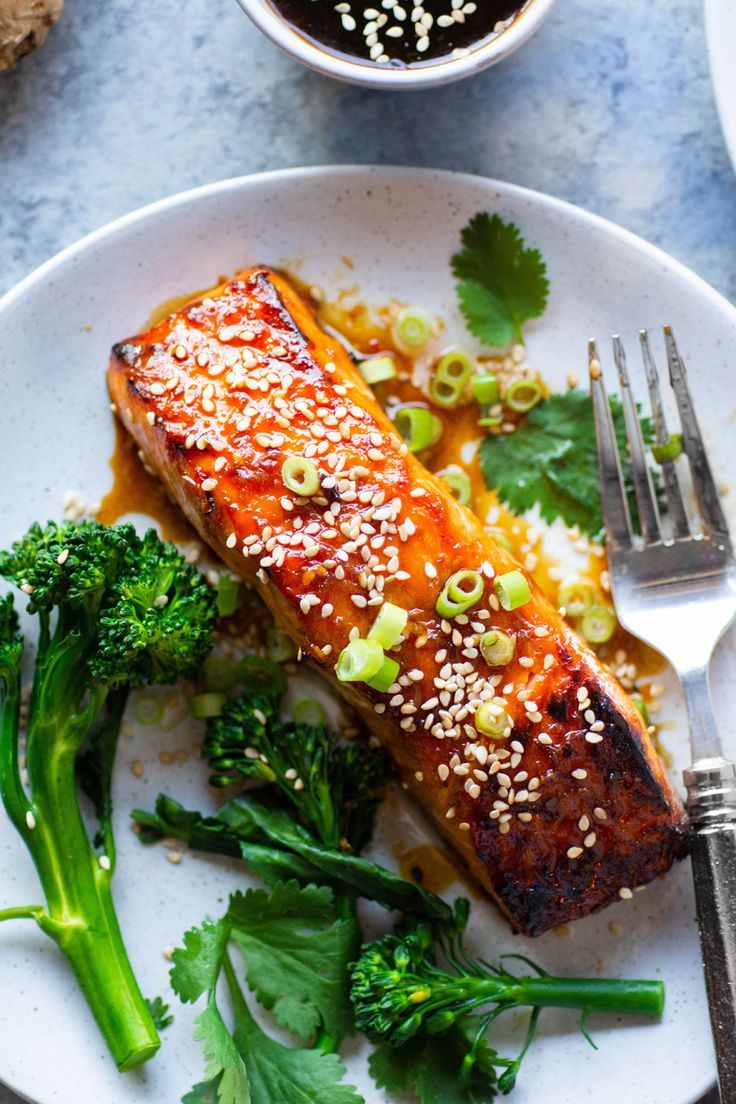
Weighing It Up
In a strict sense, tofu in any packaged form is not allowed when following a Paleo plan. However, several versions of the Paleo Diet have developed — the Primal Diet is one — that allow the moderate consumption of some dairy, coffee and other foods that aren’t strictly Paleo. With these diets, a vegetarian wishing to follow a Paleo-style plan may eat small amounts of tofu. Consuming soy foods has been linked to improved heart health and a lower risk of breast cancer, so the benefits may outweigh the cons.
The Soy Ploy | Chris Kresser
Today’s article about the dangers of soy products is from Nourishing Our Children, an organization dedicated to supported learning, behavior and health in children through optimal nutrition. I encourage all parents to visit their website and read the “What Parents Need to Know” section. There is also a downloads section with free guides and briefing books available for download.
Although widely promoted as a health food, hundreds of studies link modern processed soy to malnutrition, digestive problems, thyroid dysfunction, cognitive decline, reproductive disorders, immune system breakdown, and even heart disease and cancer.
How could soy be linked to all this disease? Because the soybean contains many naturally occurring toxins. All legumes contain toxins but the problem with soy is that the toxins are found in very high levels and are resistant to the traditional ways of getting rid of them.
Long, slow fermentation (as in the traditional production of miso, tempeh and soy sauce) gets rid of the phytic acid and other digestive inhibitors but not the phytoestrogens in soy.
Myths about Isoflavones
One of the most common myths is that soy estrogens (isoflavones) are beneficial for your health. Isoflavones are the estrogen-like compounds occurring naturally in soy foods. They act as the plant’s natural pesticides, causing insects to become sterile. Research has shown that isoflavones can prevent ovulation and stimulate the growth of cancer cells. As little as 38 mg isoflavones per day (less than the amount found in 1 cup of soy milk) can result in hypothyroidism with symptoms of lethargy, constipation, weight gain and fatigue. The isoflavones in soy have been shown to cause reproductive problems, infertility, thyroid disease and liver disease in mice, rats, cheetahs, sturgeon, quail, sheep, pigs and marmoset monkeys.
Research has shown that isoflavones can prevent ovulation and stimulate the growth of cancer cells. As little as 38 mg isoflavones per day (less than the amount found in 1 cup of soy milk) can result in hypothyroidism with symptoms of lethargy, constipation, weight gain and fatigue. The isoflavones in soy have been shown to cause reproductive problems, infertility, thyroid disease and liver disease in mice, rats, cheetahs, sturgeon, quail, sheep, pigs and marmoset monkeys.
Traditional versus Modern Soy Foods
It is important to distinguish between traditional and modern soy foods. In Asia, traditional soy foods were consumed in small amounts, usually as a fermented condiment. Traditional fermented soy foods include miso, soy sauce, tempeh and natto. Tofu was prepared by a precipitation process that gets rid of some of the anti-nutrients, and tofu was often then fermented. Tofu was usually consumed in small amounts in fish broth, which provided lots of compensating minerals and compounds that support thyroid function.
Soymilk underwent a very long preparation process to get rid of anti-nutrients and it was consumed with shrimp or egg yolk, ingredients that helped compensate for the many anti-nutrients that remained. Mostly a food for the elderly, it was sometimes given to nursing mothers but never to growing children.
Problems with Soy Protein Isolate
Modern soy foods are very different. Most are made with soy protein isolate (SPI), which is a protein-rich powder extracted by an industrial process from the waste product of soy oil manufacturing. It is the industry’s way of making a profit on a waste product. The industry spent over 30 years and billions of dollars developing SPI.
Soy Protein Isolate is produced at very high temperatures and pressures. This processing does get rid of some of the anti-nutrients in soybeans, but unfortunately many of the proteins are denatured in the process, including lysine. That is why growing animals fed soy must be given a lysine supplement. In feeding studies, SPI caused many deficiencies in rats. That soy causes deficiencies in B12 and zinc is widely recognized; but the range of deficiencies was surprising.
In feeding studies, SPI caused many deficiencies in rats. That soy causes deficiencies in B12 and zinc is widely recognized; but the range of deficiencies was surprising.
Although SPI is added to many foods, it was never granted GRAS status, meaning “Generally Recognized as Safe”. The FDA only granted GRAS status to SPI for use as a binder in cardboard boxes. During the processing of soy, many additional toxins are formed, including nitrates (which are carcinogens) and a toxin called lysinoalanine. It was concerns about lysinoalanine in SPI that led the FDA to deny GRAS status for SPI as a food additive.
In spite of all these problems, SPI is the basic ingredient of soy infant formula and the FDA even allows a health claim for foods containing 6.25 grams SPI per serving.
The Dangers of Soy Infant Formula
Infants on soy formula can take in dangerously high levels of soy isoflavones. On a body weight basis, this can mean ten times the level that can cause thyroid suppression in adults after three months, and eight times the level that can cause hormonal changes in adults after just one month.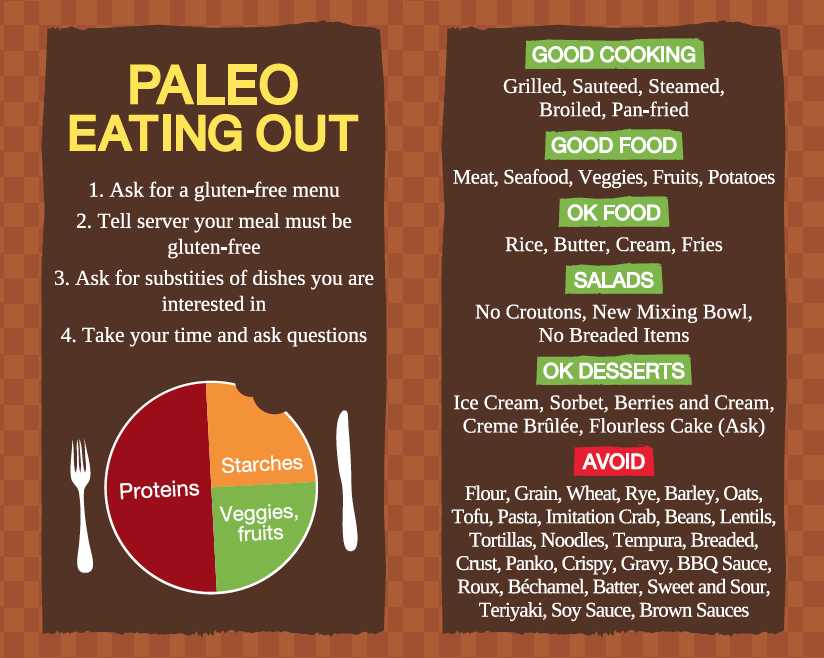
According to a Swiss report adult women consuming 100 mg isoflavones (about 2 cups of soy milk, or 1 cup of cooked mature soybeans) provide the estrogenic equivalent of a contraceptive pill.
This means for a baby that weighs 6 kg (or just over 13 pounds), 10 mg provides the estrogenic equivalent of a contraceptive pill. Thus, the average amount of soy-based formula taken in by a child provides the estrogenic equivalent of at least four birth control pills. Because babies are more vulnerable than adults to the effects of dietary estrogens, the effects could actually be much greater than that of four birth control pills.
Hence the statement, “Babies on soy formula receive the estrogenic equivalent of at least five birth control pills per day.”
Homemade Baby Formula
For adopted infants, or as a solution for mothers who aren’t physically able to breastfeed or who aren’t able to produce enough milk, we’d like parents to know that there are nutrient dense, homemade Baby Formula Recipes in the book Nourishing Traditions which have been used with great success by parents all over the world since 1995!
Are Beans and Legumes Good For You?
Toxicity of uncooked beans
It may come as a surprise to you, but as recently as 19 years ago imports of red kidney beans into South Africa were legally prohibited because of “their potential toxicity to humans” (63). Many people think about kidney beans as nutritious, plant based high-protein foods; few would ever consider them to be toxic poisons. But indeed toxic they are – unless adequately soaked and boiled kidney beans and almost all legumes produce detrimental effects in our bodies.
Many people think about kidney beans as nutritious, plant based high-protein foods; few would ever consider them to be toxic poisons. But indeed toxic they are – unless adequately soaked and boiled kidney beans and almost all legumes produce detrimental effects in our bodies.
Starting in the early 1970’s a number of scientific papers reported that consumption of raw or undercooked red kidney beans caused nausea, vomiting, abdominal pain, severe diarrhea, muscle weakness and even inflammation of the heart. [42, 52, 60] Similar symptoms were documented in horses and cattle. [8] Further, raw kidney beans were lethally toxic to rats when fed at more than 37% of their daily calories. [24, 27, 51]
Like the proverbial canary in a coal mine, these clues should make us proceed cautiously as we consider the nutritional benefits and/or liabilities of beans and legumes. Before I get into why raw or partially cooked beans, legumes and soy are toxic, I want to first point out the obvious – these foods (even when fully cooked) are nutritional lightweights when compared to meat, fish and other animal foods.
The Nutrient Content of Beans and Legumes
If we examine the USDA’s My Plate, governmental nutritionists have arbitrarily created five food groups: 1) grains, 2) vegetables, 3) fruit, 4) dairy and 5) protein foods. [61] On the surface, these categories seem reasonable, and I would basically agree that most common foods could logically be placed into one of these five categories except for one glaring exception – protein foods.
Upon more careful inspection of this category we find the USDA has decided that protein foods should include: 1) meat, 2) poultry, 3) fish, 4) eggs, 5) nuts and seeds and 6) dry beans and peas. I have little disagreement that meat, poultry, fish and eggs are good sources of protein. However, digging a little bit deeper, we soon find that the USDA tells us that these six protein food groups are equivalent and can be used interchangeably with one another (61) – meaning that animal protein sources (meats, poultry, fish and eggs) are nutritionally comparable to plant protein sources (nuts, seeds, dry beans and peas).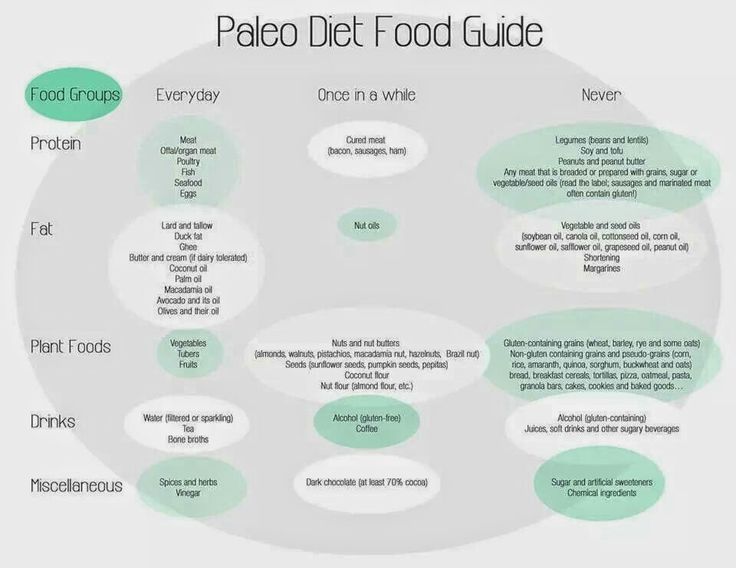 OK?
OK?
It gets better still. A quote from the USDA My Plate recommendations:
“Dry beans and peas are the mature forms of legumes such as kidney beans, pinto beans, black-eyed peas, and lentils. These foods are excellent sources of plant protein, and also provide other nutrients such as iron and zinc. They are similar to meats, poultry, and fish in their contribution of these nutrients. Many people consider dry beans and peas as vegetarian alternatives for meat.” (61).
Let’s let the data speak for itself and really see how “dry beans and peas” stack up to meats, poultry, fish and eggs in terms of protein, iron and zinc as alluded to by the USDA.
In the figure above [data from (66)] you can see that on a calorie by calorie basis, legumes are utter lightweights when compared to the protein content of lean poultry, beef, pork and seafood.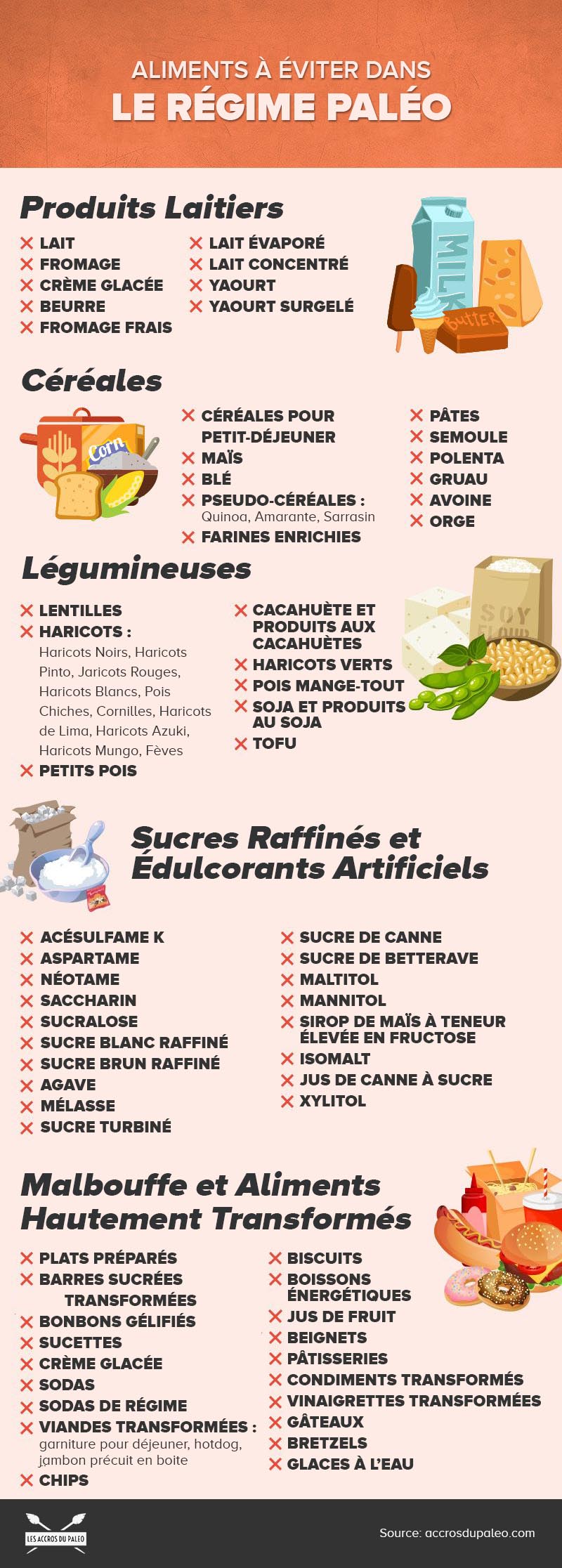 Nuts and seeds fare even worse. Beans, peas and other legumes contain 66% less protein than either lean chicken or turkey, and 61% less protein than lean beef, pork and seafood. What the USDA doesn’t tell us is that our bodies don’t process bean and legume proteins nearly as efficiently as plant proteins – meaning that the proteins found in beans, peas and other legumes have poor digestibility.
Nuts and seeds fare even worse. Beans, peas and other legumes contain 66% less protein than either lean chicken or turkey, and 61% less protein than lean beef, pork and seafood. What the USDA doesn’t tell us is that our bodies don’t process bean and legume proteins nearly as efficiently as plant proteins – meaning that the proteins found in beans, peas and other legumes have poor digestibility.
The Food and Agricultural Organization (FAO)/World Health Organization (WHO) of the United Nations have devised a protein quality index known as the Protein Digestibility-Corrected Amino Acid Score (PDCAAS). This index reveals that beans and other legumes maintain second-rate PDCAAS ratings which average about 20 to 25% lower than animal protein ratings. [14] So to add insult to injury legumes and beans not only contain about three times less protein than animal foods, but what little protein they do have is poorly digested. Their poor PDCAAS scores stem from a variety of anti-nutrients which impair protein absorption.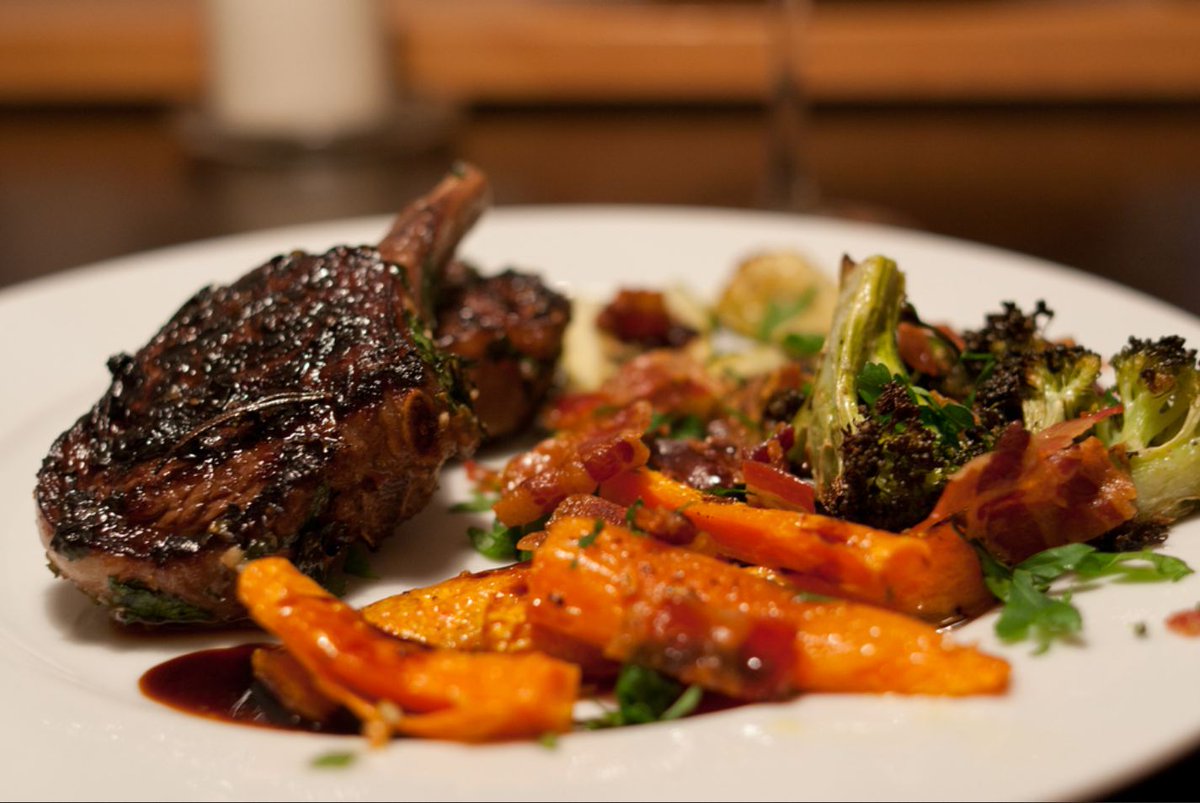 [20, 29, 44] and from low levels of two essential amino acids (cysteine and methionine). [66]
[20, 29, 44] and from low levels of two essential amino acids (cysteine and methionine). [66]
I don’t know about you, but I have no idea how the USDA concluded that legumes are, “excellent sources of plant protein . . . similar to meats, poultry, and fish in their contribution of these nutrients.”
Battle of the Proteins: Comparing Plant and Animal Sources
By Mark J. Smith, Ph.D.
Now let’s take a look at the average zinc and iron content of eight commonly eaten legumes (green peas, lentils, kidney beans, lima beans, garbanzo beans [chick peas], black-eyed peas, mung beans and soybeans). In the two figures below, I have contrasted the average iron and zinc content [data from (66)] of these eight legumes to lean chicken, turkey, beef, pork and seafood.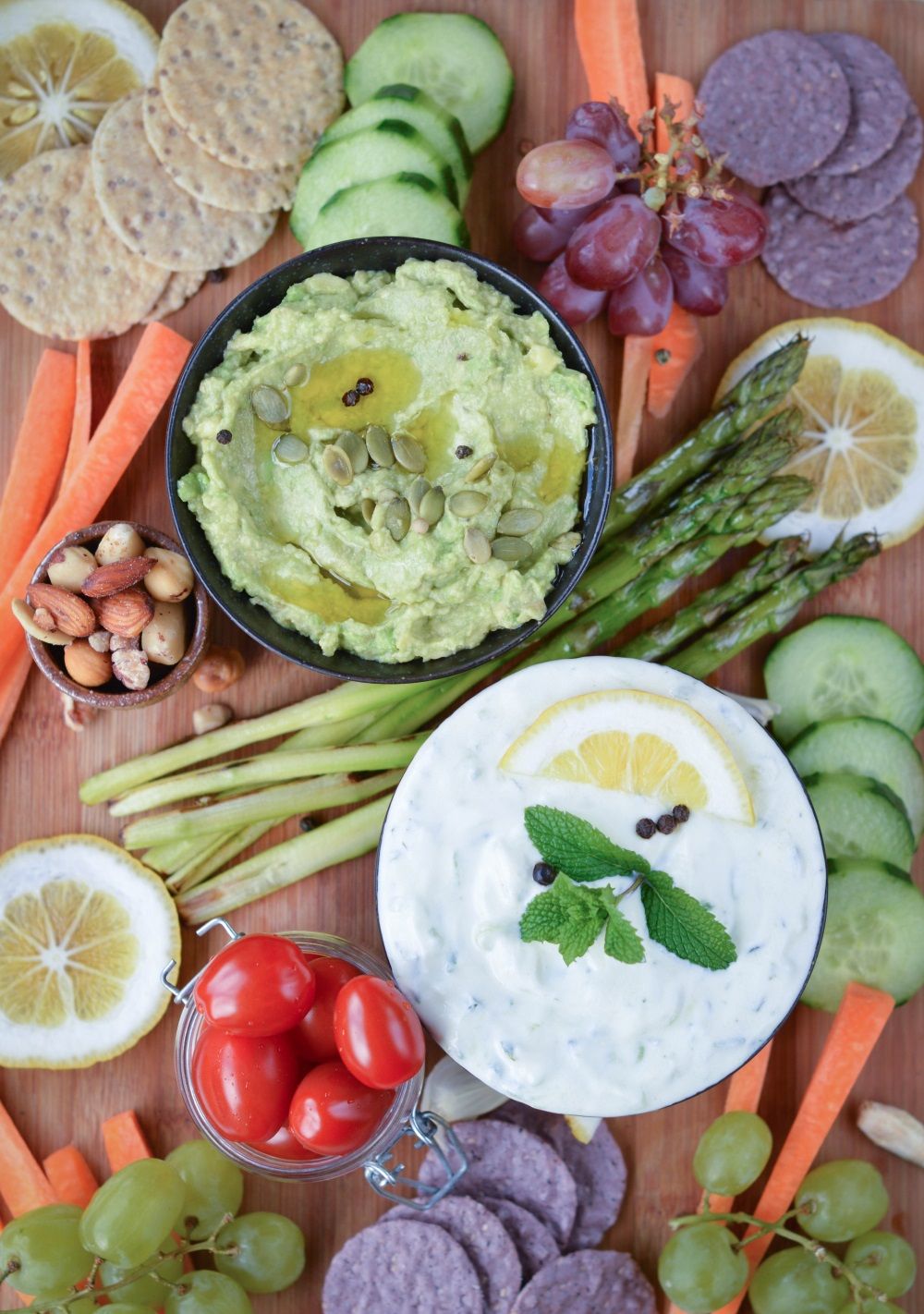
Notice that the iron content of legumes appears to be similar to seafood and about twice as high as in lean meats and eggs. Once again, as was the case with legume protein, this data is misleading because it doesn’t tell us how legume iron is handled in our bodies.
Experimental human studies from Dr. Cook’s laboratory in Switzerland and [30] from Dr. Hallberg’s research group in Sweden [26] have shown that only about 20 to 25% of the iron in legumes is available for absorption because it is bound to phytate. So in reality, the high iron content of legumes (2. 2 mg/100 kcal) plummets by 75 – 80%, thereby making legumes a very poor source of iron compared to animal foods. A similar situation occurs with zinc, as phytate and other anti-nutrients in legumes severely reduce its absorption in our bodies. [13, 19, 57]
2 mg/100 kcal) plummets by 75 – 80%, thereby making legumes a very poor source of iron compared to animal foods. A similar situation occurs with zinc, as phytate and other anti-nutrients in legumes severely reduce its absorption in our bodies. [13, 19, 57]
Given that this information has been known for more than 30 years, it absolutely defies logic how the USDA could misinform the American public by declaring that, “These foods are excellent sources of plant protein, and also provide other nutrients such as iron and zinc. They are similar to meats, poultry, and fish in their contribution of these nutrients.”
Antinutrients in beans and legumes
From the picture I have painted so far, you can see how misleading it can be to evaluate the nutritional and health effects of beans and other legumes by simply analyzing their nutrient content on paper, as the USDA has done. Before we can pass nutritional judgment on any food, it is absolutely essential to determine how it actually acts within our bodies.
Before we can pass nutritional judgment on any food, it is absolutely essential to determine how it actually acts within our bodies.
Beans are not good sources of either zinc or iron, and they have low protein digestibility because these legumes are chock full of anti-nutrients that impair our body’s ability to absorb and assimilate potential nutrients found in these foods.
As with whole grains, the primary purpose of most antinutrients in legumes is to discourage predation and prevent destruction of the plant’s reproductive materials (e.g. its seeds) by microorganisms, insects, birds, rodents and large mammals. [10, 25] We most frequently refer to legume seeds as beans, but don’t forget that peanuts are not really nuts at all, but rather are legumes. In the table below I have listed some of the more commonly known legume seeds along with their scientific names.
Part of the reason for doing this is to point out that many different versions of the beans we frequently eat actually are the exact same species – and as such contain comparable concentrations of toxic antinutrients.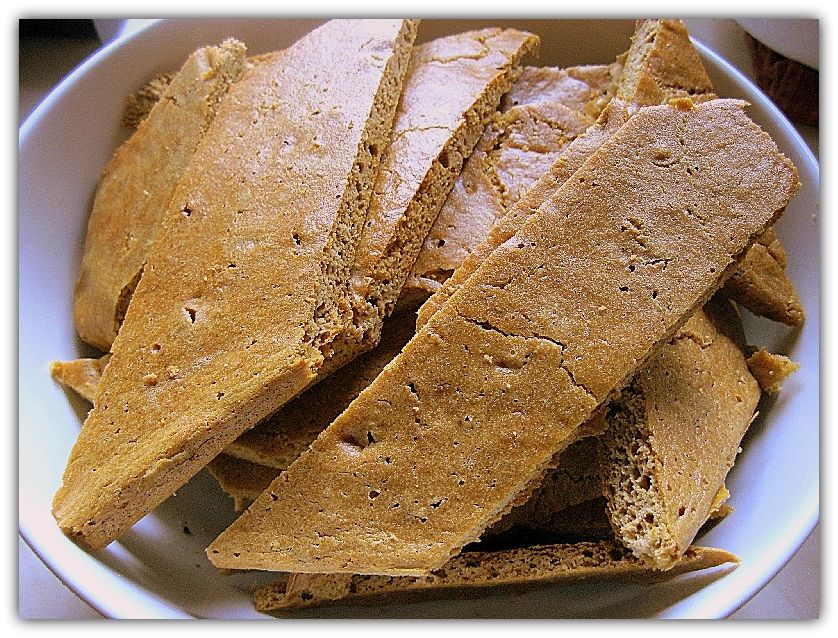 Notice how many times you see the scientific name, Phaseolus vulgaris, repeated in the table above. If you enjoy Mexican food then you have probably tasted Phaseolus vulgaris as either refried beans or black beans, since these two beans are one in the same species, differing only by color. Great northern beans, green beans, kidney beans, navy beans, pinto beans and white kidney beans also are members of the same species, Phaseolus vulgaris. I bring this information up because all beans that are members of Phaseolus vulgaris contain some of the highest concentrations of antinutrients known.
Notice how many times you see the scientific name, Phaseolus vulgaris, repeated in the table above. If you enjoy Mexican food then you have probably tasted Phaseolus vulgaris as either refried beans or black beans, since these two beans are one in the same species, differing only by color. Great northern beans, green beans, kidney beans, navy beans, pinto beans and white kidney beans also are members of the same species, Phaseolus vulgaris. I bring this information up because all beans that are members of Phaseolus vulgaris contain some of the highest concentrations of antinutrients known.
The list of antinutrients found in legumes, beans and soy is seemingly endless and includes: lectins, saponins, phytate, polyphenols (tannins, isoflavones), protease inhibitors, raffinose oligosaccharides, cyanogenetic glycosides, and favism glycosides. I know that this list appears somewhat formidable at first because of all the scientific terms, but don’t be worried – the concepts underlying how these toxins may impair our health are easily understood. Let’s briefly go through this list so you can clearly understand why you should avoid legumes.
Let’s briefly go through this list so you can clearly understand why you should avoid legumes.
Mexican Cuisine, Intestinal Permeability and The Paleo Diet
By Loren Cordain, Ph.D.
Lectins
All beans and legumes are concentrated sources of lectins. Lectins are potent antinutrients that plants have evolved as toxins to ward off predators. [10] Remember, raw or undercooked kidney beans cause severe cases of food poisoning in humans and were lethally toxic in rats. Although several kidney bean antinutrients probably contributed to these poisonous effects, animal experiments indicate that a specific lectin found in kidney beans was the major culprit.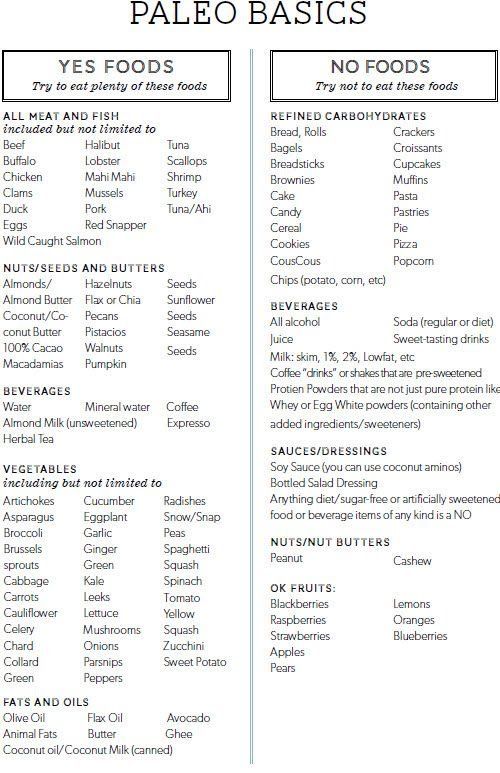 [2, 44] Kidney beans and all other varieties of beans (black beans, kidney beans, pinto beans, string beans, navy beans etc.) within the Phaseolus vulgaris species contain a lectin called phytohemagglutinin (PHA). The more PHA we ingest, the more ill we become. This is why raw beans are so toxic – they contain much higher concentrations of PHA than cooked beans. [4, 23. 46] However, cooking doesn’t completely eliminate PHA, and even small amounts of this lectin are known to produce adverse health effects, providing they can penetrate our gut barrier.
[2, 44] Kidney beans and all other varieties of beans (black beans, kidney beans, pinto beans, string beans, navy beans etc.) within the Phaseolus vulgaris species contain a lectin called phytohemagglutinin (PHA). The more PHA we ingest, the more ill we become. This is why raw beans are so toxic – they contain much higher concentrations of PHA than cooked beans. [4, 23. 46] However, cooking doesn’t completely eliminate PHA, and even small amounts of this lectin are known to produce adverse health effects, providing they can penetrate our gut barrier.
The trick with lectins is that they must bypass our intestinal wall and enter into our bloodstream if they are to wreak havoc within our bodies. So far, no human studies of PHA have ever been conducted. However, in laboratory animals, PHA easily breeches the gut barrier and enters into the bloodstream where it may travel to many organs and tissues and disrupt normal cell function and cause disease. [45, 49] Human and animal tissue experiments reveal that PHA and other food lectins can cause a “leaky gut” and enter circulation. [24, 34, 35, 45, 47, 49, 64, 65] A leaky gut represents one of the first steps implicated in many autoimmune diseases. [67] Impaired intestinal integrity produced by dietary lectins may also cause low level inflammation in our bloodstreams [15, 43, 48, 62] – a necessary step for atherosclerosis (the artery clogging process) and cancer.
[24, 34, 35, 45, 47, 49, 64, 65] A leaky gut represents one of the first steps implicated in many autoimmune diseases. [67] Impaired intestinal integrity produced by dietary lectins may also cause low level inflammation in our bloodstreams [15, 43, 48, 62] – a necessary step for atherosclerosis (the artery clogging process) and cancer.
Besides kidney beans and other bean varieties within Phaseolus vulgaris species, all other legumes contain lectins with varying degrees of toxicity ranging from mild to lethal. Soybean lectin (SBA) is also known to impair intestinal permeability and cause a leaky gut. [1, 35] Peanut lectin (PNA) is the only legume lectin to have been tested in living humans by Dr. Rhodes’ research group in London. Within less than an hour after ingestion in healthy normal subjects, PNA entered their bloodstreams [64] – whether the peanuts were cooked or not. (Later I will show you how peanuts and PNA are potent initiators of atherosclerosis.)
The lectins found in peas (PSA) and lentils (LCA) seem to be much less toxic than PHA, SBA or PNA, however they are not completely without adverse effects in tissue and animal experiments. [9, 21, 25, 38] Unfortunately, no long term lectin experiments have ever been conducted in humans. Nevertheless, from animal and tissue studies, we know that these antinutrients damage the intestinal barrier, impair growth, alter normal immune function and cause inflammation.
[9, 21, 25, 38] Unfortunately, no long term lectin experiments have ever been conducted in humans. Nevertheless, from animal and tissue studies, we know that these antinutrients damage the intestinal barrier, impair growth, alter normal immune function and cause inflammation.
Saponins
The term, saponin, is derived from the word soap. Saponins are antinutrients found in almost all legumes and have soap-like properties that punch holes in the membranes lining the exterior of all cells. As was the case with lectins, this effect is dose dependent – meaning that the more saponins you ingest, the greater will be the damage to your body’s cells. Our first line of defense against any antinutrient is our gut barrier. Human tissue and animal studies confirm that legume saponins can easily disrupt the cells lining our intestines and rapidly make their way into our bloodstream. [1, 16, 17, 18, 32] Once in the bloodstream in sufficient quantities, saponins can then cause ruptures in our red blood cells in a process.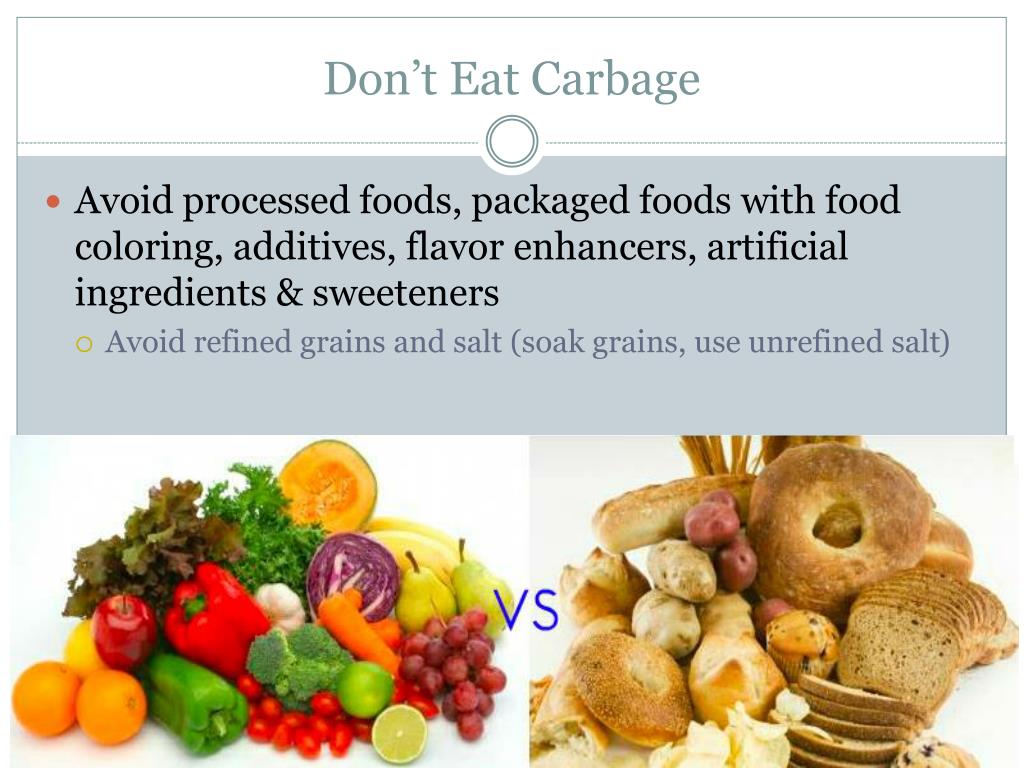 known as hemolysis which can then temporarily impair our blood’s oxygen carrying capacity [3] In the long term, the major threat to our health from legume saponins stems not from hemolysis (red blood cell damage) but rather from their ability to increase intestinal permeability. [3, 16, 17, 18, 32] A leaky gut likely promotes low level inflammation because it allows toxins and bacteria in our guts to interact with our immune system. This process is known to be is a necessary first step in autoimmune diseases [67] and may promote the inflammation necessary for heart disease and the metabolic syndrome to develop and progress. [68]
known as hemolysis which can then temporarily impair our blood’s oxygen carrying capacity [3] In the long term, the major threat to our health from legume saponins stems not from hemolysis (red blood cell damage) but rather from their ability to increase intestinal permeability. [3, 16, 17, 18, 32] A leaky gut likely promotes low level inflammation because it allows toxins and bacteria in our guts to interact with our immune system. This process is known to be is a necessary first step in autoimmune diseases [67] and may promote the inflammation necessary for heart disease and the metabolic syndrome to develop and progress. [68]
The other major problem with legume saponins is that cooking does not destroy them. In fact, even after extended boiling for two hours, 85-100% of the original saponins in most beans and legumes remain intact. [55] On the other hand, by eating fermented soy products such as tofu and tempeh, or sprouted beans you can lower your saponin intake. [39] The table below shows you the saponin content of some common beans, legumes and soy products.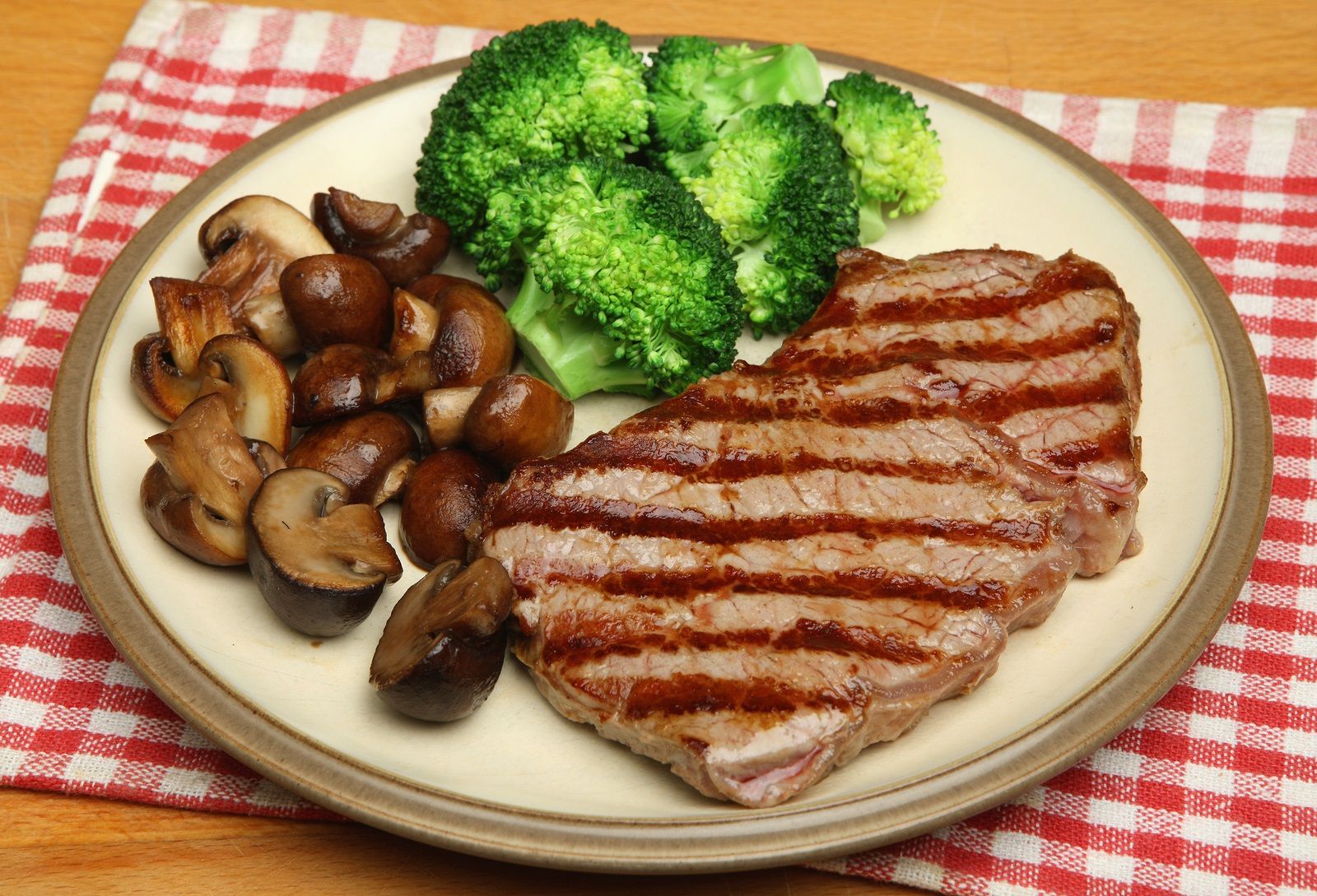
Notice that the concentration of saponins in soy protein isolates is dangerously high. If you are an athlete or anyone else trying to increase your protein intake by supplementing with soy protein isolates, I suggest that you reconsider. A much healthier strategy would be to eat more meats, fish and seafood. These protein packed foods taste a whole lot better than artificial soy isolates and are much better for your body. If we only eat legumes occasionally, saponin damage to our intestines will quickly repair itself, however when legumes or soy products are consumed in high amounts as staples or daily supplements, the risk for a leaky gut and the diseases associated with it is greatly increased.
Phytate
We’ve already discussed this antinutrient in great detail, so there is really not much else to say.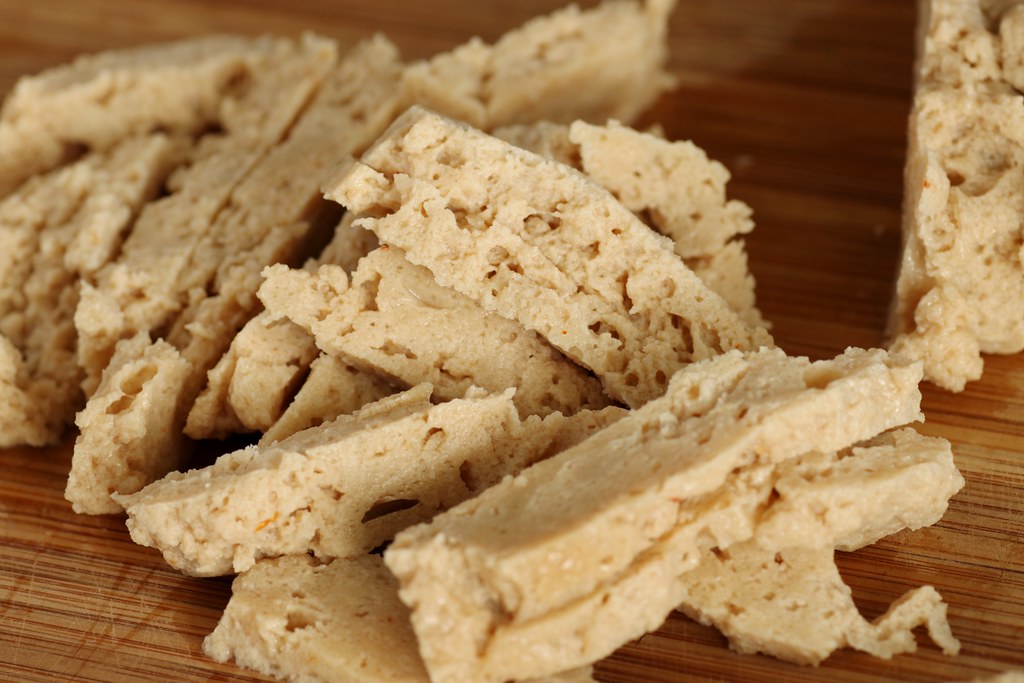 Because phytate prevents the full absorption of iron, zinc, calcium, magnesium and copper present in legumes and whole grains, then reliance upon these plant foods frequently causes multiple nutritional deficiencies in adults, children and even nursing infants. Boiling and cooking don’t seem to have much effect upon the phytate content of legumes, whereas sprouting and fermentation can moderately reduce phytate concentrations. Also, vitamin C counteracts phytate’s inhibitory effects on mineral absorption. Nevertheless, the best tactic to reduce phytate in your diet is to adopt The Paleo Diet – humanity’s original legume and grain free diet.
Because phytate prevents the full absorption of iron, zinc, calcium, magnesium and copper present in legumes and whole grains, then reliance upon these plant foods frequently causes multiple nutritional deficiencies in adults, children and even nursing infants. Boiling and cooking don’t seem to have much effect upon the phytate content of legumes, whereas sprouting and fermentation can moderately reduce phytate concentrations. Also, vitamin C counteracts phytate’s inhibitory effects on mineral absorption. Nevertheless, the best tactic to reduce phytate in your diet is to adopt The Paleo Diet – humanity’s original legume and grain free diet.
Polyphenols
Tannins
Polyphenols are antioxidant compounds that protect plants from UV sunlight damage as well as from insects, pests and other microorganisms. Just like sunscreens protect our skin from UV damage, polyphenols are one of the compounds plants have evolved to escape the harmful effects of ultraviolet (UV) radiation from the sun, along with damage caused by animal and microorganism predators. Polyphenols come in many different varieties and forms and are common throughout the plant kingdom. When we eat these compounds, they seem to have both healthful and detrimental effects in our bodies. For instance, resveratrol is a polyphenol found in red wine that may increase lifespan in mice and slow or prevent many diseases. On the other hand, at least two types of polyphenols (tannins and isoflavones) within beans, soy and other legumes may have adverse effects in our bodies (59).
Polyphenols come in many different varieties and forms and are common throughout the plant kingdom. When we eat these compounds, they seem to have both healthful and detrimental effects in our bodies. For instance, resveratrol is a polyphenol found in red wine that may increase lifespan in mice and slow or prevent many diseases. On the other hand, at least two types of polyphenols (tannins and isoflavones) within beans, soy and other legumes may have adverse effects in our bodies (59).
Tannins are bitter tasting polyphenols and give wine its astringent qualities. As with all antinutrients, the more tannin you ingest, the greater is the potential to disrupt your health. Tannins are similar to phytate in that they reduce protein digestibility and bind iron and other minerals, thereby preventing their normal absorption. [29, 59] Some, but not all tannins damage our intestines causing a “leaky gut”. [59]
By now you can see that legumes, beans and soy represent a triple threat to our intestinal integrity since three separate antinutrients (lectins, saponins, and tannins) all work together to encourage a leaky gut.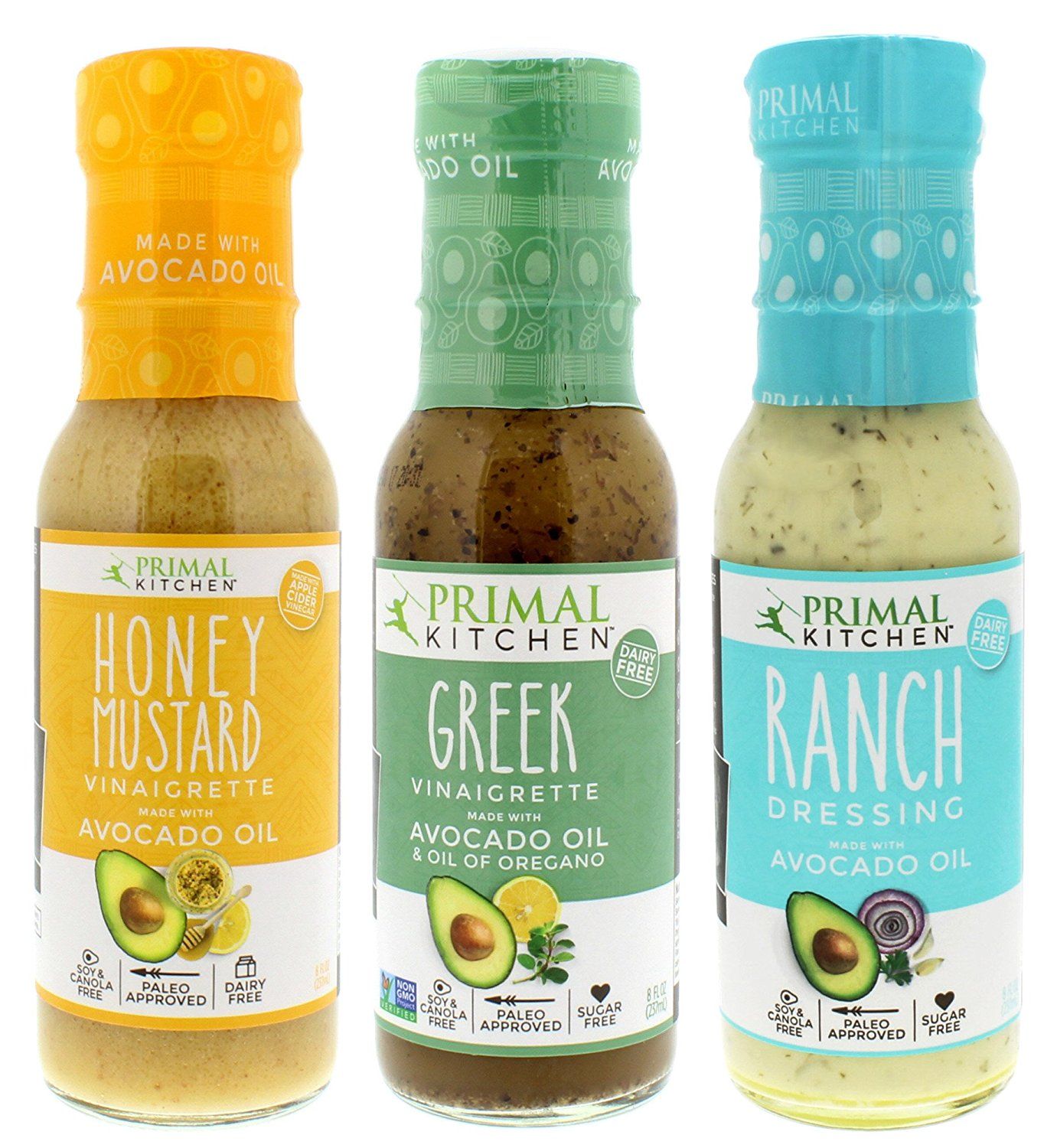
Isoflavones
Isoflavones are some of nature’s weirder plant compounds in that they act like female hormones in our bodies. Certain isoflavones which are concentrated in soybeans and soy products are called phytoestrogens – literally meaning, “plant estrogens”. Isoflavones from soy products can cause goiters (an enlargement of the thyroid gland), particularly if your blood levels of iodine are low. Two phytoestrogens in soy called genistein and daidzen produce goiters in experimental animals. You don’t have to develop full blown goiters by these soy isoflavones to impair your health. In a study of elderly subjects, Dr. Ishizuki [31] and colleagues demonstrated that when subjects (average age 61 years) were given 30 grams of soy daily for three months they developed symptoms of low thyroid function (malaise, lethargy, and constipation), and half of these people ended up with goiters.
For women, regular intake of soy or soy isoflavones may disrupt certain hormones that regulate the normal menstrual cycle.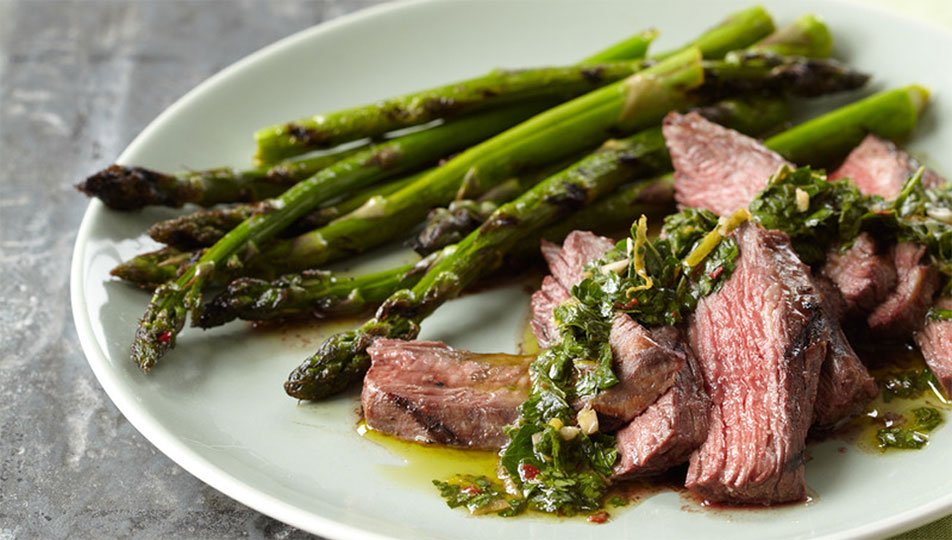 In a meta analysis of 47 studies, Dr. Hooper and co-workers [28] demonstrated that soy or soy isoflavones consumption caused two female hormones, follicle stimulating hormone (FSH) and luteinizing hormone (LH), to fall by 20%. The authors concluded, “The clinical implications of these modest hormonal changes remain to be determined.”
In a meta analysis of 47 studies, Dr. Hooper and co-workers [28] demonstrated that soy or soy isoflavones consumption caused two female hormones, follicle stimulating hormone (FSH) and luteinizing hormone (LH), to fall by 20%. The authors concluded, “The clinical implications of these modest hormonal changes remain to be determined.”
I wouldn’t necessary agree with this conclusion, nor would I call a 20% reduction in both FSH and LH “modest”. In one study, seven of nine women who consumed vegetarian diets (containing significant quantities of legumes) for only six weeks stopped ovulating. [69] One of the hormonal changes reported in this study, concurrent with the cessation of normal periods, was a significant decline in luteinizing hormone (LH). Because western vegetarian diets almost always contain lots of soy and hence soy isoflavones, it is entirely possible that soy isoflavones were directly responsible for the declines in LH and the disruption of normal menstrual periods documented in this study.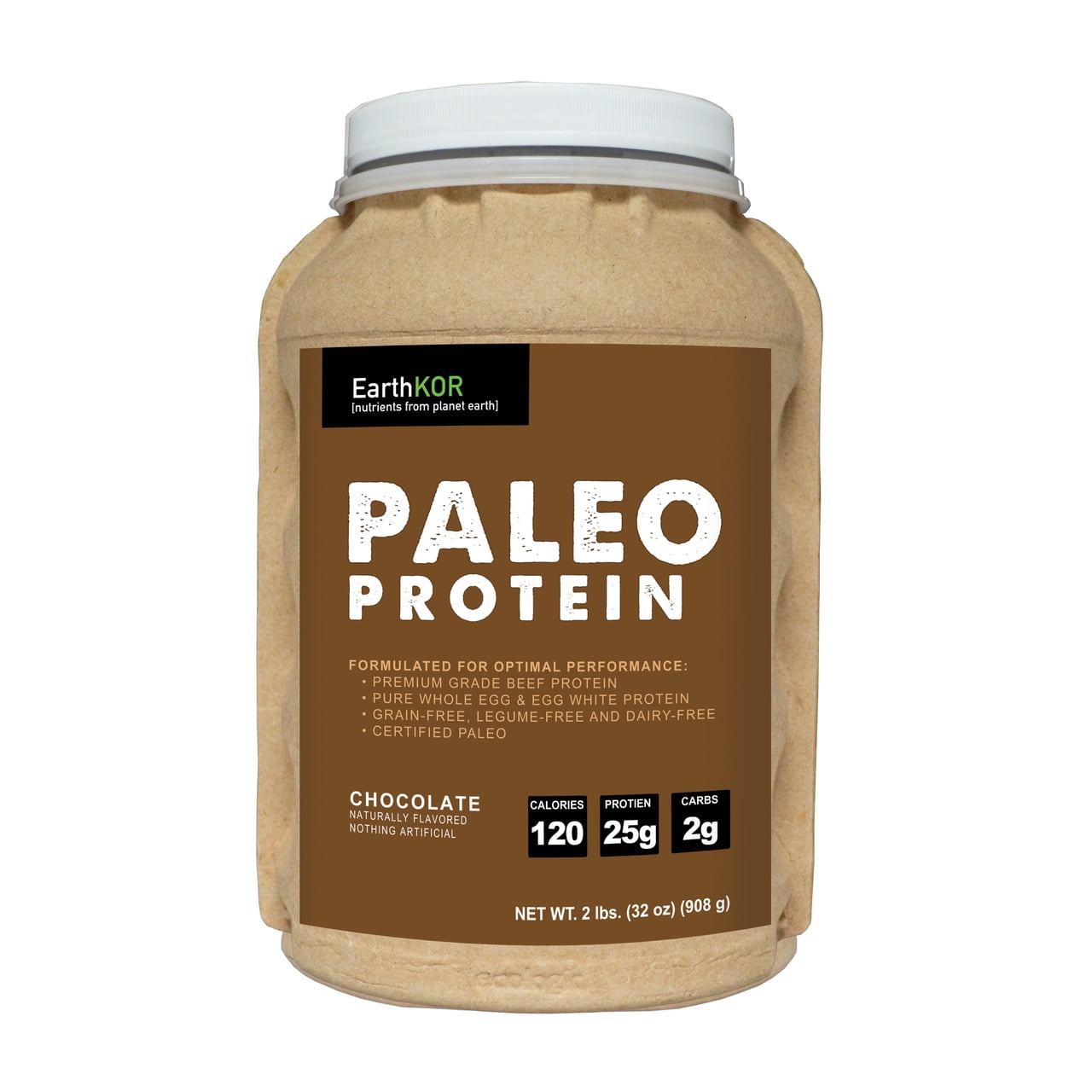
I have received emails from women all over the world who’s menstrual and infertility problems subsided after adopting The Paleo Diet (see Chapter 13). Their stories paint a credible picture that modern day Paleo Diets contain multiple nutritional elements that may improve or eliminate female reproductive and menstrual problems. Unfortunately, scientific validation of these women’s experiences still lies in the future.
Perhaps the most worrisome effects of soy isoflavones may occur in developing fetuses with iodine deficient mothers and in infants receiving soy formula. A recent (2007) paper by Dr. Gustavo Roman [54] at the University of Texas Health Sciences Center has implicated soy isoflavones as risk factors for autism via their ability to impair normal iodine metabolism and thyroid function. Specifically, the soy isoflavone known as genistein may inhibit a key iodine based enzyme required for normal brain development. Pregnant women with borderline iodine status can become iodine deficient by consuming a high soy diet. Their deficiency may then be conveyed to their developing fetus which in turn impairs growth in fetal brain cells known to be involved in autism. Infants born with iodine deficiencies are made worse if they are fed a soy formula. Once again, the evolutionary lesson repeats itself. If a food or nutrient generally was not a part of our ancestral diet, it has a high probability of disrupting our health and that of our children.
Their deficiency may then be conveyed to their developing fetus which in turn impairs growth in fetal brain cells known to be involved in autism. Infants born with iodine deficiencies are made worse if they are fed a soy formula. Once again, the evolutionary lesson repeats itself. If a food or nutrient generally was not a part of our ancestral diet, it has a high probability of disrupting our health and that of our children.
Protease Inhibitors
Unless you are a biologist by trade or are involved in a very narrow area of human nutrition, very few people on the planet know about protease inhibitors. But I can tell you that when you eat beans, soy or other legumes you should be as aware of protease inhibitors as you are of a radar trap on the freeway – that is – if you don’t want to get a ticket or eat foods that can have unfavorably effects upon your health.
When we eat any protein, we have enzymes in our intestines which break protein into its component amino acids.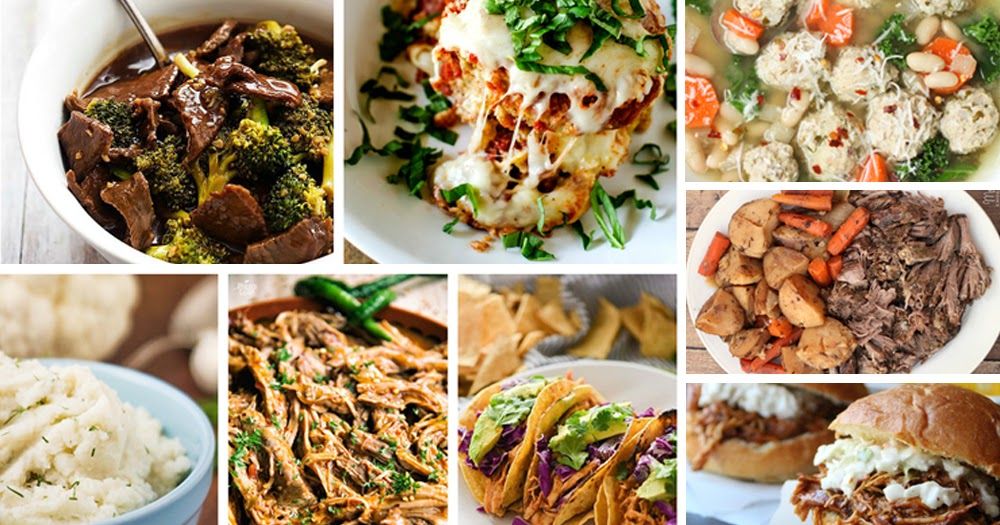 These enzymes are called proteases and must be operating normally for our bodies to properly assimilate dietary proteins. Almost all legumes are concentrated sources of antinutrients called protease inhibitors which prevent our gut enzymes from degrading protein into amino acids. Protease inhibitors found in beans, soy, peanuts and other legumes are part of the reason why legume proteins have lower bioavailability than meat proteins. [20] In experimental animals ingestion of protease inhibitors in high amounts depresses normal growth and causes pancreatic enlargement. [21, 39, 41] Heating and cooking effectively destroys about 80% of protease inhibitors found in most legumes [5, 11], so the dietary concentrations of these antinutrients found in beans and soy are thought to have little harmful effects in our bodies. Nevertheless, at least one important adverse effect of protease inhibitors may have been overlooked.
These enzymes are called proteases and must be operating normally for our bodies to properly assimilate dietary proteins. Almost all legumes are concentrated sources of antinutrients called protease inhibitors which prevent our gut enzymes from degrading protein into amino acids. Protease inhibitors found in beans, soy, peanuts and other legumes are part of the reason why legume proteins have lower bioavailability than meat proteins. [20] In experimental animals ingestion of protease inhibitors in high amounts depresses normal growth and causes pancreatic enlargement. [21, 39, 41] Heating and cooking effectively destroys about 80% of protease inhibitors found in most legumes [5, 11], so the dietary concentrations of these antinutrients found in beans and soy are thought to have little harmful effects in our bodies. Nevertheless, at least one important adverse effect of protease inhibitors may have been overlooked.
When the gut’s normal protein degrading enzymes are inhibited by legume protease inhibitors, the pancreas works harder and compensates by secreting more protein degrading enzymes.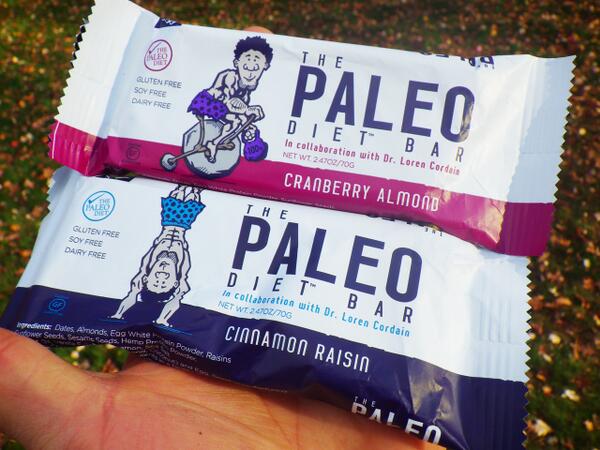 Consequently, consumption of protease inhibitors causes levels of protein degrading enzymes to rise within our intestines. One enzyme in particular, called trypsin, increases significantly. The rise in trypsin concentrations inside our gut is not without consequence, because elevated trypsin levels increase intestinal permeability in animal experiments. [53] Once again we see yet another antinutrient found in legumes that contribute to a leaky gut, which as I have explained earlier is not without consequence.
Consequently, consumption of protease inhibitors causes levels of protein degrading enzymes to rise within our intestines. One enzyme in particular, called trypsin, increases significantly. The rise in trypsin concentrations inside our gut is not without consequence, because elevated trypsin levels increase intestinal permeability in animal experiments. [53] Once again we see yet another antinutrient found in legumes that contribute to a leaky gut, which as I have explained earlier is not without consequence.
Raffinose Oligosaccharides
Here’s another big scientific term for a little problem almost every one of us has had to deal with at one time or another after we ate beans. Beans cause gas or flatulence. Almost all legumes contain complex sugars called oligosaccharides. In particular, two complex sugars (raffinose and stachyose) are the culprits and are the elements in beans that give us gas. [6] We lack the gut enzymes to breakdown these complex sugars into simpler sugars. Consequently, bacteria in our intestines metabolize these oligosaccharides into a variety of gases (hydrogen, carbon dioxide and methane). Beans don’t affect us all equally. Some people experience extreme digestive discomfort with diarrhea, nausea, intestinal rumbling and flatulence, whereas others are almost symptomless. [6] These differences among people seem to be caused by varying types of gut flora (microorganisms).
[6] We lack the gut enzymes to breakdown these complex sugars into simpler sugars. Consequently, bacteria in our intestines metabolize these oligosaccharides into a variety of gases (hydrogen, carbon dioxide and methane). Beans don’t affect us all equally. Some people experience extreme digestive discomfort with diarrhea, nausea, intestinal rumbling and flatulence, whereas others are almost symptomless. [6] These differences among people seem to be caused by varying types of gut flora (microorganisms).
Cyanogenetic Glycosides
Upon digestion, antinutrients in lima beans called cyanogenetic glycosides are turned into the lethal poison, hydrogen cyanide, in our intestines. Fortunately, cooking eliminates most of the hydrogen cyanide in lima beans. Nevertheless a number of fatal poisonings have been reported in the medical literature from people eating raw or undercooked lima beans. [70]
Although most of us would never consider eating raw lima beans, the problem doesn’t end here. Upon cooking most of the hydrogen cyanide in lima beans is converted into a compound called thiocyanate which you can add to soy isoflavones as dietary antinutrients that impair iodine metabolism and cause goiter. [70] In iodine deficient children, these so-called goitrogens are suspect dietary agents underlying autism. [54]
Upon cooking most of the hydrogen cyanide in lima beans is converted into a compound called thiocyanate which you can add to soy isoflavones as dietary antinutrients that impair iodine metabolism and cause goiter. [70] In iodine deficient children, these so-called goitrogens are suspect dietary agents underlying autism. [54]
Favism Glycosides
Unless you are a bean connoisseur, most of us in the United States have never tasted broad beans which are also known as fava or faba beans. In Mediterranean, Middle Eastern and North African countries broad beans are more popular. Unfortunately, for many people in these countries, particularly young children, consumption of fava beans can be lethal. It has been intuitively known for centuries that fava bean consumption was fatal in certain people. However, the biochemistry of the disease (called favism) has only been worked out in the past 50 years or so. [7]
[7]
Favism can only occur in people with a genetic defect called G6PD deficiency. This mutation is the most common human enzyme defect – being present in more than 400 million people worldwide. It is thought to confer protection against malaria. People whose genetic background can be traced to Italy, Greece, the Middle East or North Africa are at a much higher risk for carrying this mutation. If you or your children don’t know if you have the genes causing favism, a simple blood test available at most hospitals and medical clinics can diagnose this problem. Consumption of fava beans in genetically susceptible people causes a massive rupturing of red blood cells called hemolytic anemia and may frequently be fatal in small children unless blood transfusions are made immediately. [7, 71] Not all people with G6PD deficiency experience favism symptoms after they eat broad beans; however if your family background is from the Mediterranean region you may be particularly susceptible.
Although it is not completely known how broad bean consumption causes favism, three antinutrient glycosides (divicine, isouramil and convicine) found in these legumes likely do the damage. [72] These compounds enter our bloodstreams, and in people with the G6PD mutations interact with red blood cells in a manner that causes them to rupture. So, you can now add fava beans along with lima beans to the list of legumes which are lethally toxic.
[72] These compounds enter our bloodstreams, and in people with the G6PD mutations interact with red blood cells in a manner that causes them to rupture. So, you can now add fava beans along with lima beans to the list of legumes which are lethally toxic.
The Human Gut: How It Works, Its Importance to Health, and Ways to Keep It Healthy
By Bill Manci
Peanuts and Heart Disease
What’s wrong with peanut oil and peanuts? Most nutritional experts would tell us that they are heart healthy foods because they contain little saturated fat and most of their fat is made up of cholesterol lowering monounsaturated and polyunsaturated fats. Hence, on the surface, you might think that peanut oil would probably be helpful in preventing the artery clogging process (atherosclerosis) that underlies heart disease.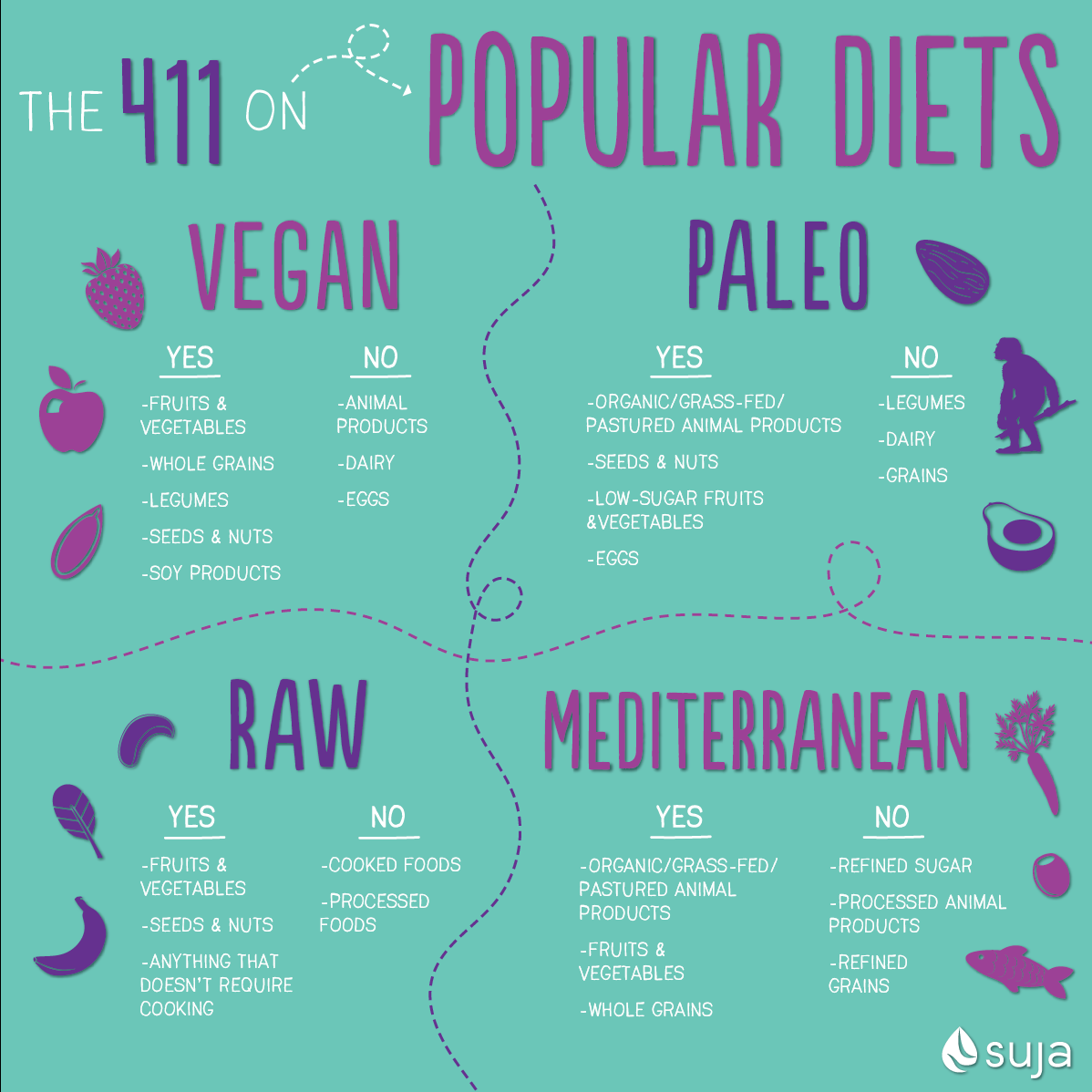 Your thoughts were not much different from those of nutritional scientists – that is until they actually tested peanuts and peanut oil in laboratory animals.
Your thoughts were not much different from those of nutritional scientists – that is until they actually tested peanuts and peanut oil in laboratory animals.
Starting in the 1960’s and continuing into the 1980’s scientists unexpectedly found peanut oil to be highly atherogenic, causing arterial plaques to form in rabbits, rats and primates [73-78] – only a single study [79] showed otherwise. Peanut oil was found to be so atherogenic that it continues to be routinely fed to rabbits to produce atherosclerosis to study the disease itself.
Initially, it was unclear how a seemingly healthful oil could be so toxic in such a wide variety of animals. Dr. David Kritchevsky and co-workers at the Wistar Institute in Philadelphia were able to show with a series of experiments that peanut oil lectin (PNA) was most likely responsible for it artery clogging properties. [36, 37] Lectins are large protein molecules and most scientists had presumed that digestive enzymes in the gut would degrade it into its component amino acids. Consequently, it was assumed that the intact lectin molecule would not be able to get into the bloodstream to do its dirty work. But they were wrong. It turned out that lectins were highly resistant to the gut’s protein shearing enzymes. An experiment conducted by Dr. Wang and colleagues and published in the prestigious medical journal Lancet [64] revealed that PNA got into the bloodstream intact in as little as 1-4 hours after subjects ate a handful of roasted, salted peanuts. Even though the concentrations of PNA in the subject’s blood were quite low, they were still at concentrations known to cause atherosclerosis in experimental animals. Lectins are a lot like super glue – it doesn’t take much. Because these proteins contain carbohydrates, they can bind to a wide variety of cells in the body, including the cells lining the arteries. And indeed, it was found that PNA did its damage to the arteries by binding to a specific sugar receptor. [58] So, the practical point here is to stay away from both peanuts and peanut oil and all legumes.
Consequently, it was assumed that the intact lectin molecule would not be able to get into the bloodstream to do its dirty work. But they were wrong. It turned out that lectins were highly resistant to the gut’s protein shearing enzymes. An experiment conducted by Dr. Wang and colleagues and published in the prestigious medical journal Lancet [64] revealed that PNA got into the bloodstream intact in as little as 1-4 hours after subjects ate a handful of roasted, salted peanuts. Even though the concentrations of PNA in the subject’s blood were quite low, they were still at concentrations known to cause atherosclerosis in experimental animals. Lectins are a lot like super glue – it doesn’t take much. Because these proteins contain carbohydrates, they can bind to a wide variety of cells in the body, including the cells lining the arteries. And indeed, it was found that PNA did its damage to the arteries by binding to a specific sugar receptor. [58] So, the practical point here is to stay away from both peanuts and peanut oil and all legumes.
Summary
I’d like to make a final departing comment before we leave the topic of beans and legumes. As you adopt The Paleo Diet or any diet, listen to your body. If a food or food type doesn’t agree with you or makes you feel ill or unwell, don’t eat it. I should have listened to my own advice 25 years ago when I was experimenting with vegetarian diets. Whenever I ate beans or legumes, I experienced digestive upset, gas and frequently had diarrhea. Since embracing The Paleo Diet almost 20 years ago, these symptoms have become a thing of the past.
The Best Plant-Based Paleo Proteins
By Elisabeth Kwak
References
1.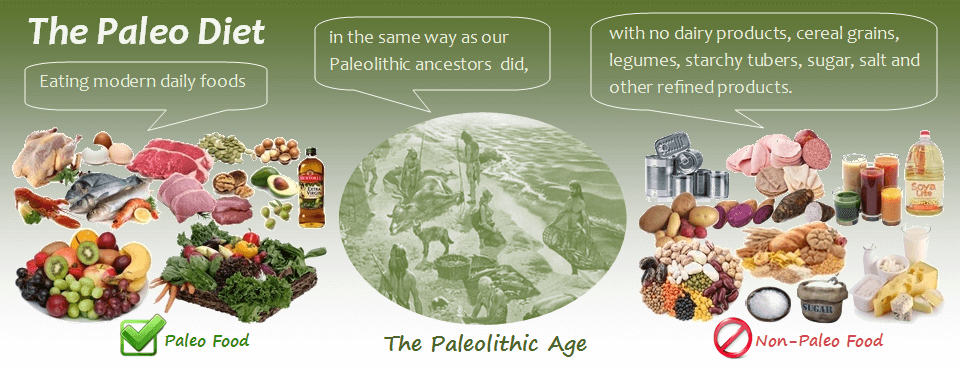 Alvarez JR, Torres-Pinedo R. Interactions of soybean lectin, soyasaponins, and glycinin with rabbit jejunal mucosa in vitro. Pediatr Res. 1982 Sep;16(9):728-31.
Alvarez JR, Torres-Pinedo R. Interactions of soybean lectin, soyasaponins, and glycinin with rabbit jejunal mucosa in vitro. Pediatr Res. 1982 Sep;16(9):728-31.
2. Banwell, JG, Howard R, Kabir I, Costerton JW. Bacterial overgrowth by indigenous microflora in the phytohemagglutinin-fed rat. Canadian Journal of Microbiology. 1988; 34:1009-13.
3. Baumann E, Stoya G, Völkner A, Richter W, Lemke C, Linss W. Hemolysis of human erythrocytes with saponin affects the membrane structure. Acta Histochem. 2000 Feb;102(1):21-35.
4. Boufassa C, Lafont J, Rouanet J M, Besancon P 1986 Thermal inactivation of lectins (PHA)isolated from Phaseolus vulgaris. Food Chem 20 295-304.
5. Buera M P, Pilosof A M R, Bartholomai G B 1984 Kinetics of trypsin inhibitory activity loss in heated flour from bean Phaseolus vulgaris. J Food Sci 49 124-126.
6. Calloway DH, Carol A. Hickey CA, Murphy EL. Reduction of intestinal gas-forming properties of legumes by traditional and experimental processing methods. J Food Sci. 1971; 36: 251-255.
J Food Sci. 1971; 36: 251-255.
7. Cappellini MD, Fiorelli G. Glucose-6-phosphate dehydrogenase deficiency. Lancet 2008;371(9606): 64–74.
8. Carmalt J, Rosel K, Burns T, Janzen E. Suspected white kidney bean (Phaseolus vulgaris) toxicity in horses and cattle. Aust Vet J. 2003 Nov;81(11):674-6.
9. Caron, M. & Steve, A.P. Lectins and Pathology, Taylor & Francis, 2000, London.
10. Chrispeels, M.J. & Raikel, N.V. (1991) Lectins, lectin genes, and their role in plant defense. Plant Cell 3, 1-9.
11. Collins J L, Beaty B F 1980 Heat inactivation of trypsin inhibitor in fresh green soybeans and physiological responses of rats fed the beans. J Food Sci 45 542-546.
12. Cordain L, Toohey L, Smith MJ, Hickey MS. Modulation of immune function by dietary lectins in rheumatoid arthritis. Br J Nutr. 2000 Mar;83(3):207-17.
13. Couzy F, Mansourian R, Labate A, Guinchard S, Montagne DH, Dirren H. Effect of dietary phytic acid on zinc absorption in the healthy elderly, as assessed by serum concentration curve tests. Br J Nutr. 1998 Aug;80(2):177-82.
Br J Nutr. 1998 Aug;80(2):177-82.
14. FAO/WHO Expert Consultation. Protein Quality Evaluation. Food and Agricultural Organization of the United Nations, FAO Food and Nutrition Paper 51, Rome.
15. Firestein GS, Alvaro-Gracia JM, Maki R. Quantitative analysis of cytokine gene expression in rheumatoid arthritis. Journal of Immunology. 1990;144: 33347-53.
16. Francis G, Kerem Z, Makkar HP, Becker K. The biological action of saponins in animal systems: a review. Br J Nutr. 2002 Dec;88(6):587-605.
17. Gee JM, Johnson IT. Interactions between hemolytic saponins, bile salts and small intestinal mucosa in the rat. J Nutr. 1988 Nov;118(11):1391-7.
18. Gee JM, Wal JM, Miller K, Atkinson H, Grigoriadou F, Wijnands MV, Penninks AH, Wortley G, Johnson IT. Effect of saponin on the transmucosal passage of beta-lactoglobulin across the proximal small intestine of normal and beta-lactoglobulin-sensitised rats. Toxicology. 1997 Feb 28;117(2-3):219-28.
19. Gibson RS, Bailey KB, Gibbs M, Ferguson EL.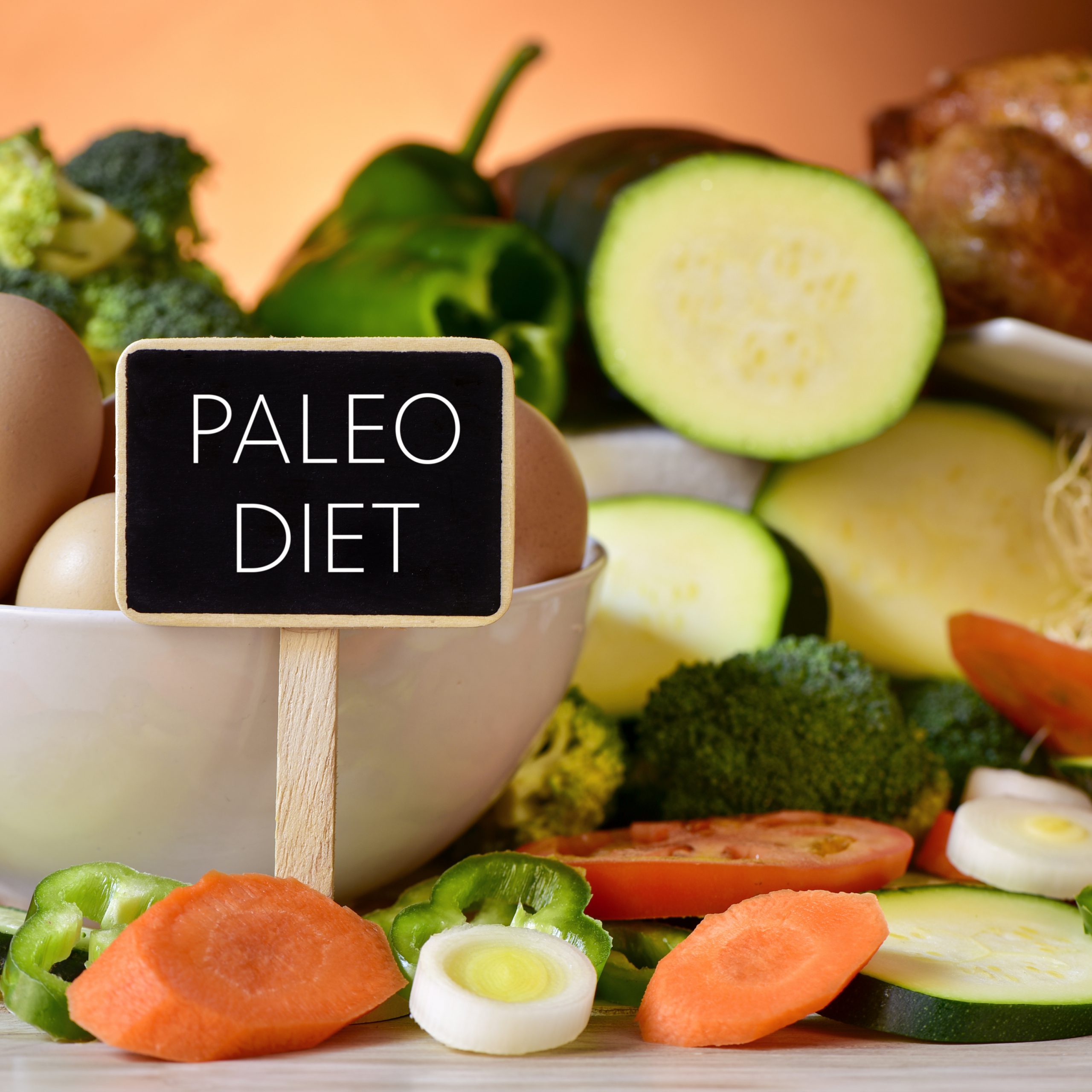 A review of phytate, iron, zinc, and calcium concentrations in plant-based complementary foods used in low-income countries and implications for bioavailability. Food Nutr Bull. 2010 Jun;31(2 Suppl):S134-46.
A review of phytate, iron, zinc, and calcium concentrations in plant-based complementary foods used in low-income countries and implications for bioavailability. Food Nutr Bull. 2010 Jun;31(2 Suppl):S134-46.
20. Gilani GS, Cockell KA, Sepehr E. Effects of antinutritional factors on protein digestibility and amino acid availability in foods. J AOAC Int. 2005 May-Jun;88(3):967-87.
21. Grant G. Anti-nutritional effects of soyabean: a review. Prog Food Nutr Sci. 1989;13(3-4):317-48.
22. Grant G, More LJ, McKenzie NH, Stewart JC, Pusztai A. A survey of the nutritional and haemagglutination properties of legume seeds generally available in the UK. Br J Nutr. 1983 Sep;50(2):207-14.
23. Grant G, More LJ, McKenzie NH, Pusztai A. The effect of heating on the haemagglutinating activity and nutritional properties of bean (Phaseolus vulgaris) seeds. J Sci Food Agric 1982;33: 1324-1326.
24. Greer F, Pusztai A. (1985). Toxicity of kidney bean (Phaseolus vulgaris) in rats: changes in intestinal permeability.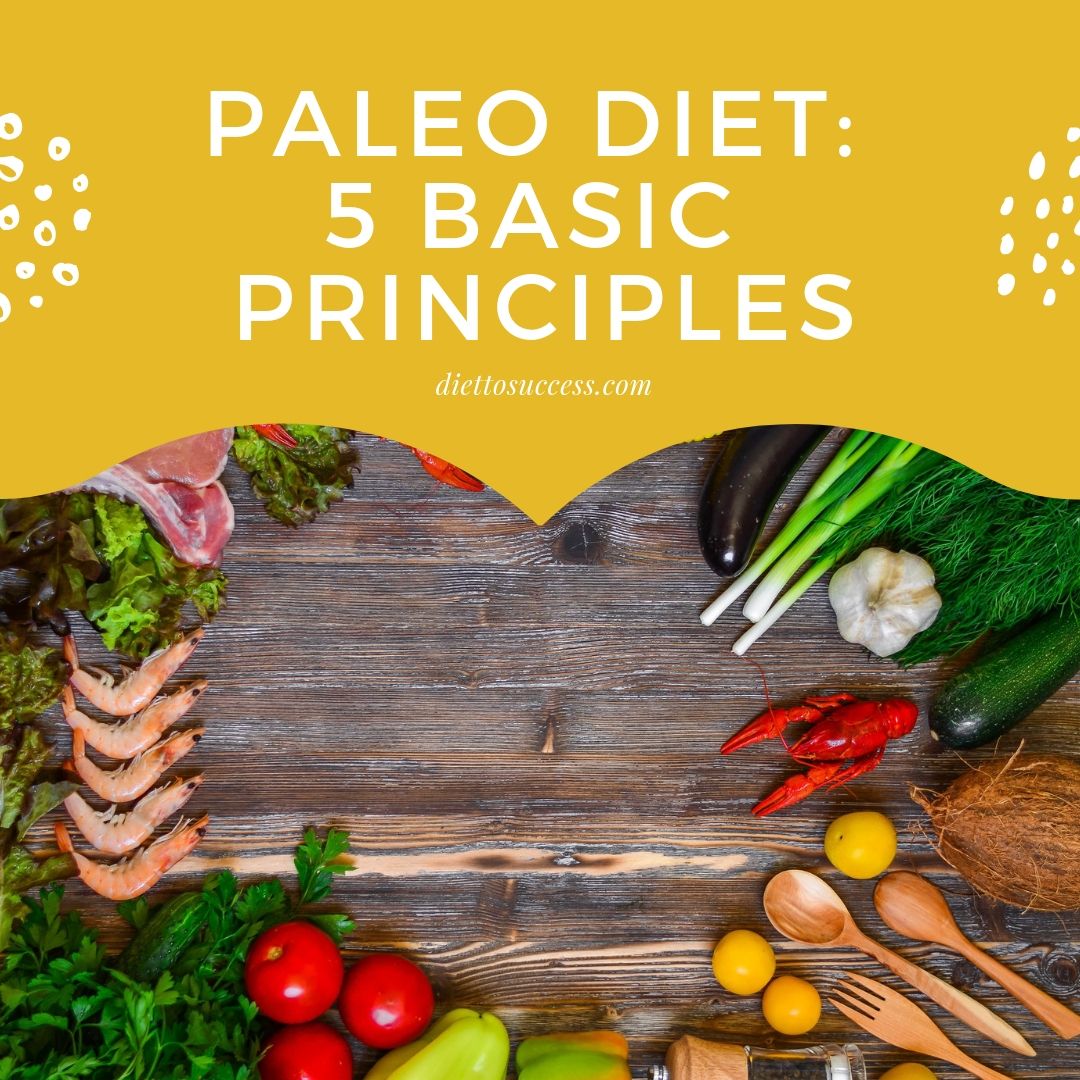 Digestion. 1985 32: 42-46.
Digestion. 1985 32: 42-46.
25. Gupta YP. Anti-nutritional and toxic factors in food legumes: a review. Plant Foods Hum Nutr 1987;37:201-228.
26. Hallberg L, Hulthén L. Prediction of dietary iron absorption: an algorithm for calculating absorption and bioavailability of dietary iron. Am J Clin Nutr. 2000 May;71(5):1147-60.
27. Hintz HF, Hogue DE, Krook L. Toxicity of red kidney beans (Phaseolus vulgaris) in the rat. J Nutr. 1967 Sep;93(1):77-86
28. Hooper L, Ryder JJ, Kurzer MS, Lampe JW, Messina MJ, Phipps WR, Cassidy A. Effects of soy protein and isoflavones on circulating hormone concentrations in pre- and post- enopausal women: a systematic review and meta-analysis. Hum Reprod Update. 2009 Jul-Aug;15(4):423-40.
29. Hughes JS, Acevedo E, Bressani R, Swanson BG. Effects of dietary fiber and tannins on protein utilization in dry beans (Phaseolus vulgaris). Food Res Int 1996;29:331-338.
30. Hurrell RF, Juillerat MA, Reddy MB, Lynch SR, Dassenko SA, Cook JD. Soy protein, phytate, and iron absorption in humans. Am J Clin Nutr. 1992 Sep;56(3):573-8.
Soy protein, phytate, and iron absorption in humans. Am J Clin Nutr. 1992 Sep;56(3):573-8.
31. Ishizuki Y, Hirooka Y, Murata Y, Togashi K. The effects on the thyroid gland of soybeans administered experimentally in healthy subjects. Nippon Naibunpi Gakkai Zasshi. 1991 May 20;67(5):622-9.
32. Johnson IT, Gee JM, Price K, Curl C, Fenwick GR. Influence of saponins on gut permeability and active nutrient transport in vitro. J Nutr. 1986 Nov;116(11):2270-7.
33. Keukens EA, de Vrije T, van den Boom C, de Waard P, Plasman HH, Thiel F, Chupin V, Jongen WM, de Kruijff B. Molecular basis of glycoalkaloid induced membrane disruption. Biochim Biophys Acta. 1995 Dec 13;1240(2):216-28.
34. Kilpatrick DC, Pusztai A, Grant G, Graham C, Ewen SW. Tomato lectin resists digestion in the mammalian alimentary canal and binds to intestinal villi without deleterious effects. FEBS Lett. 1985;185:299-305
35. Knudsen D, Jutfelt F, Sundh H, Sundell K, Koppe W, Frøkiaer H. Dietary soya saponins increase gut permeability and play a key role in the onset of soyabean-induced enteritis in Atlantic salmon ( Salmo salar L. ). Br J Nutr. 2008 Jul;100(1):120-9.
). Br J Nutr. 2008 Jul;100(1):120-9.
36. Kritchevsky D et al. Influence of native and randomized peanut oil on lipid metabolism and aortic sudanophilia in the vervet monkey. Atherosclerosis 1982;42:53-58.
37. Kritchevsky D, Tepper SA, Klurfeld DM. Lectin may contribute to the atherogenicity of peanut oil. Lipids 1998 Aug;33(8):821-3
38. Liener IE. Nutritional significance of lectins in the diet. In The Lectins: Properties, Functions, and Applications in Biology and Medicine, pp. 527-52 [I.E. Liener, N. Sharon, I.J. Goldstein, editors]. Orlando; Academic Press, 1986.
39. Liener IE (1994) “Implications of antinutritional components in soybean foods.” Crit Rev Food Sci Nutr., vol. 34, pp. 31-67.
40. Lochner N, Pittner F, Wirth M, Gabor F. Wheat germ agglutinin binds to the epidermal growth factor receptor of artificial Caco-2 membranes as detected by silver nanoparticle enhanced fluorescence. Pharm Res. 2003 May;20(5):833-9
41. Losso JN. The biochemical and functional food properties of the bowman-birk inhibitor. Crit Rev Food Sci Nutr. 2008 Jan;48(1):94-118.
Crit Rev Food Sci Nutr. 2008 Jan;48(1):94-118.
42. Noah ND, Bender AE, Reaidi GB, Gilbert RJ. Food poisoning from raw red kidney beans. BrMed J. 1980 Jul 19;281 (6234):236-7.
43. Muraille E, Pajak B, Urbain J, Leo O. Carbohydrate-bearing cell surface receptors involved in innate immunity: interleukin-12 induction by mitogenic and nonmitogenic lectins. Cell Immunol. 1999 Jan 10;191(1):1-9.
44. Pusztai A, Clarke EM, Grant G, King TP. The toxicity of Phaseolus vulgaris lectins. Nitrogen balance and immunochemical studies. J Sci Food Agric. 1981 Oct;32(10):1037-46.
45. Pusztai A, Greer F & Grant G. Specific uptake of dietary lectins into the systemic circulation of rats. Biochemical Society Transcations. 1989;17, 527-528
46. Pusztai A, Grant G. Assessment of lectin inactivation by heat and digestion. In: Methods in Molecular Medicine: Vol. 9: Lectin methods and protocols. J M Rhodes, JM, J D Milton JD (Eds). Humana Press Inc. Totowa, NJ, 1998.
47.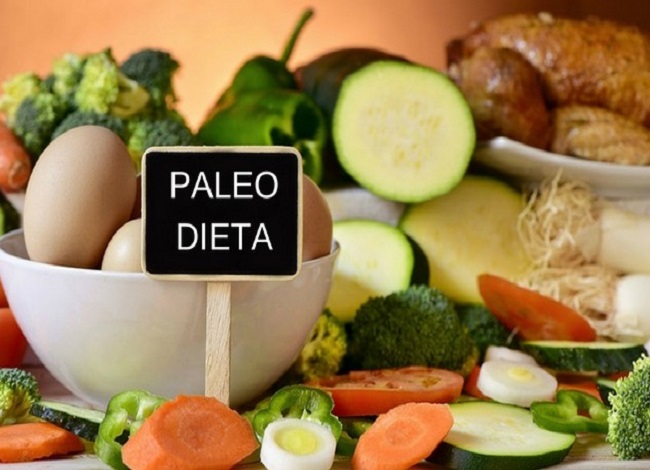 Pusztai A, Ewen SW, Grant G, Brown DS, Stewart JC, Peumans WJ, Van Damme EJ, Bardocz S. Antinutritive effects of wheat-germ agglutinin and other N-acetylglucosamine-specific lectins. Br J Nutr. 1993 Jul;70(1):313-21
Pusztai A, Ewen SW, Grant G, Brown DS, Stewart JC, Peumans WJ, Van Damme EJ, Bardocz S. Antinutritive effects of wheat-germ agglutinin and other N-acetylglucosamine-specific lectins. Br J Nutr. 1993 Jul;70(1):313-21
48. Pusztai A.. Dietary lectins are metabolic signals for the gut and modulate immune and hormone functions. European Journal of Clinical Nutrition. 1993;47: 691-99.
49. Pusztai A, Ewen SWB, Grant G, Peumans WJ, Van Damme EJM, Rubio LA, Bardocz S. Plant (food) lectins as signal molecules: Effects on the morphology and bacterial ecology of the small intestine. In Lectin Reviews, Volume I , pp. 1-15 [D.C. Kilpatrick, E. Van Driessche, T.C. Bog-Hansen, editors]. St. Louis: Sigma, 1991.
50. Pusztai A, Grant G, Spencer RJ, Duguid TJ, Brown DS, Ewen, SWB, Peumans WJ, Van Damme EJM, Bardocz S. Kidney bean lectin-induced Escherichia coli overgrowth in the small intestine is blocked by GNA, a mannose-specific lectin. Journal of Applied Bacteriology. 1993;75: 360-68.
51. Rattray EAS, Palmer R, Pusztai A. Toxicity of kidney beans (Phaseolus vulgaris L.) to conventional and gnotobiotic rats. Journal of the Science of Food and Agriculture. 1974; 25:1035-40.
52. Rodhouse JC, Haugh CA, Roberts D, Gilbert RJ. Red kidney bean poisoning in the UK: an analysis of 50 suspected incidents between 1976 and 1989. Epidemiol Infect. 1990 Dec;105(3):485-91.
53. Róka R, Demaude J, Cenac N, Ferrier L, Salvador-Cartier C, Garcia-Villar R, Fioramonti J, Bueno L. Colonic luminal proteases activate colonocyte proteinase-activated receptor-2 and regulate paracellular permeability in mice. Neurogastroenterol Motil. 2007 Jan;19(1):57-65.
54. Román GC. Autism: transient in utero hypothyroxinemia related to maternal flavonoid ingestion during pregnancy and to other environmental antithyroid agents. J Neurol Sci. 2007 Nov 15;262(1-2):15-26
55. Ruiz RG, Price KR, Arthur AE, Rose ME, Rhodes MJ, Fenwick RG. Effect of soaking and cooking on saponin content and composition of chickpeas (Cicer arietinum) and lentils (Lens culinaris). J Agric Food Chem 1996;44:1526-30.
J Agric Food Chem 1996;44:1526-30.
56. Ryder SD, Smith JA, Rhodes JM. Peanut lectin: a mitogen for normal human colonic epithelium and human HT29 colorectal cancer cells. Journal of the National Cancer Institute. 1992;84:1410-16.
57. Sandberg AS. Bioavailability of minerals in legumes. Br J Nutr. 2002 Dec;88 Suppl 3:S281-5.
58. Sanford GL, Harris-Hooker S. Stimulation of vascular proliferation by beta-galactoside specific lectins. FASEB J 1990;4:2912-2918.
59. Singleton VL. Naturally occurring food toxicants: phenolic substances of plant origin. Adv Food Res. 1981;27:149-242.
60. Tuxen MK, Nielsen HV, Birgens H. [Poisoning by kidney beans (Phaseolus vulgaris)]. Ugeskr Laeger. 1991 Dec 16;153(51):3628-9.
61. U.S.D.A. Choose My Plate.
62. van den Bourne BE, Kijkmans BA, de Rooij HH, le Cessie S, Verweij CL. Chloroquine and hydroxychloroquine equally affect tumor necrosis factor-alpha, interleukin 6, and interferon-gamma production by peripheral blood mononuclear cells.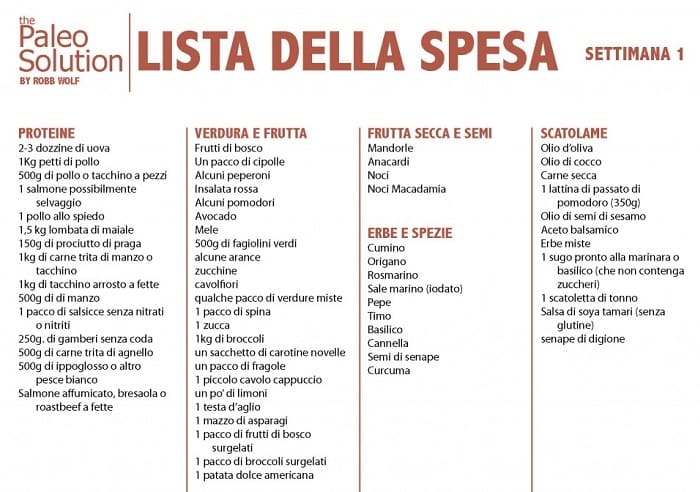 Journal of Rheumatology. 1997;24: 55-60.
Journal of Rheumatology. 1997;24: 55-60.
63. Venter FS, Thiel PG. Red kidney beans–to eat or not to eat? S Afr Med J. 1995 Apr;85(4):250-2.
64. Wang Q, Yu LG, Campbell BJ, Milton JD, Rhodes JM. Identification of intact peanut lectin in peripheral venous blood. Lancet. 1998;352:1831-2
65. Wilson AB, King TP, Clarke EMW, Pusztai A. Kidney bean (Phaseolus vulgaris) lectin-induced lesions in the small intestine. II. Microbiological studies. Journal of Comparitive Pathology. 1980; 90:597-602.
66. Nutritionist Pro Dietary Software. //www.nutritionistpro.com/
67. Fasano A. Leaky gut and autoimmune diseases. Clin Rev Allergy Immunol. 2012 Feb;42(1):71-8
68. Piya MK, Harte AL, McTernan PG. Metabolic endotoxaemia: is it more than just a gut feeling? Curr Opin Lipidol. 2013 Feb;24(1):78-85.
69. Pirke KM, Schweiger U, Laessle R, Dickhaut B, Schweiger M, Waechtler M. Dieting influences the menstrual cycle: vegetarian versus nonvegetarian diet. Fertil Steril. 1986 Dec;46(6):1083-8
1986 Dec;46(6):1083-8
70. Conn EE. Cyanogenic glycosides. In: Encyclopedia of Plant Physiology. New Series. Volume 8. Secondary plant products [Bell, A.E.; Charlwood, B.V. (Editors)]. 1980 pp. 461-492
71. Schuurman M, van Waardenburg D, Da Costa J, Niemarkt H, Leroy P.Severe hemolysis and methemoglobinemia following fava beans ingestion in glucose-6-phosphatase dehydrogenase deficiency: case report and literature review. Eur J Pediatr. 2009 Jul;168(7):779-82
72. Arese P, Bosia A, Naitana A, Gaetani S, D’Aquino M, Gaetani GF. Effect of divicine and isouramil on red cell metabolism in normal and G6PD-deficient (Mediterranean variant) subjects. Possible role in the genesis of favism. Prog Clin Biol Res. 1981;55:725-46
73. Gresham GA et al. The independent production of atherosclerosis and thrombosis in the rat. Br J Exp Pathol 1960;41:395-402.
74. Scott RF et al. Short term feeding of unsaturated vs. satruated fat in the production of atherosclerosis and thrombosis in the rat.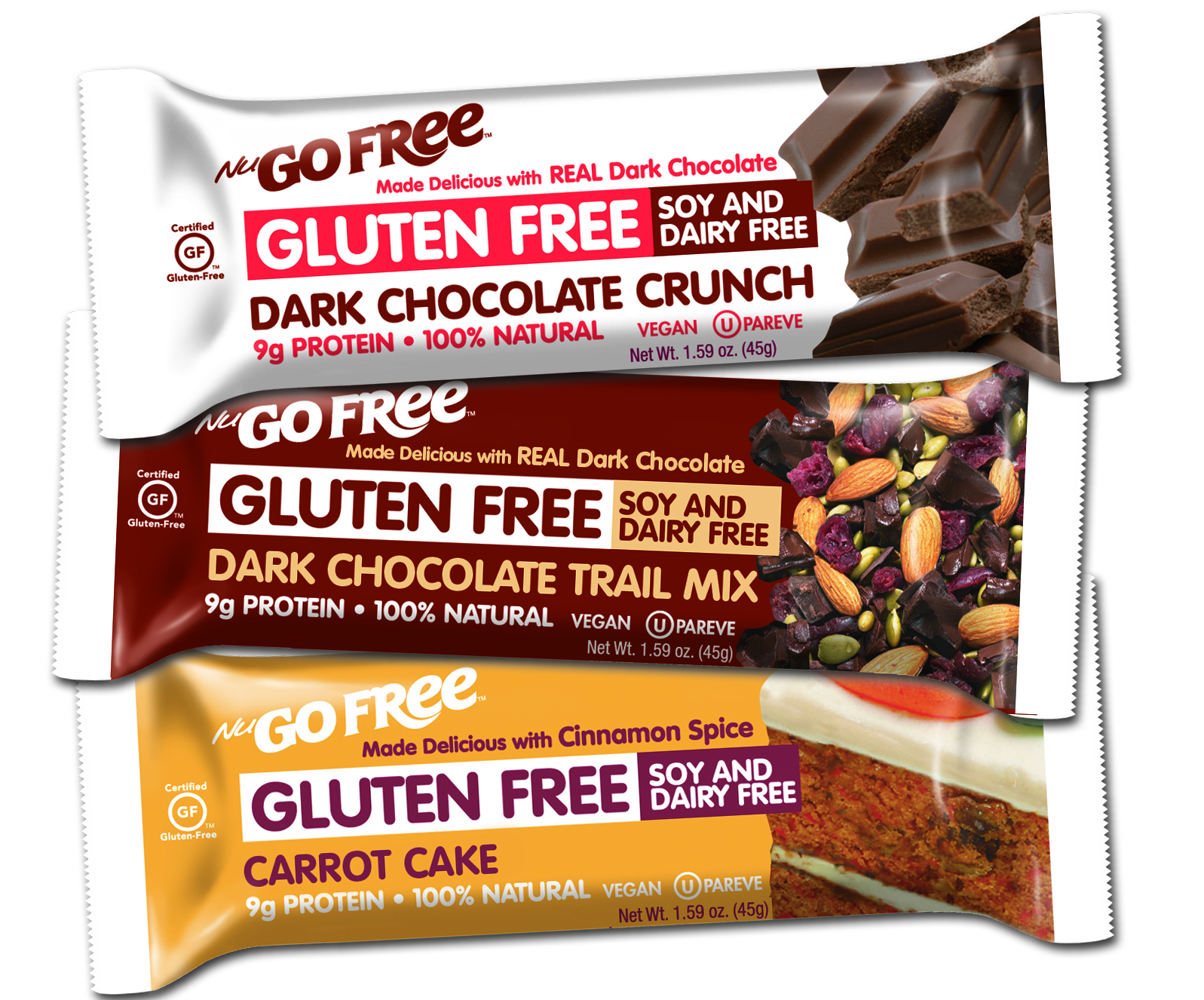 Exp Mol Pathol 1964;3:421-443.
Exp Mol Pathol 1964;3:421-443.
75. Wissler RW et al. Aortic lesions and blood lipids in monkeys fed three food fats. Fed Proc 1967;26:371.
76. Kritchevsky D et al. Influence of native and randomized peanut oil on lipid metabolism and aortic sudanophilia in the vervet monkey. Atherosclerosis 1982;42:53-58.
77. Kritchevsky D et al. Lipid metabolism and experimental atherosclerosis in baboons– influence of cholesterol free, semi-synthetic diets. Am J Clin Nutr 1974;27:29-50.
78. Boyle EM et al. Atherosclerosis. Ann Thorac Surg 1997;64:S47-56.
79. Alderson LM et al. Peanut oil reduces diet-induced atherosclerosis in cynomolgus monkeys. Arteriosclerosis 1986;6:465-74.
How to Avoid Soy ~ The Paleo Mom
Soy is another ingredient that has permeated the food supply. Soy lecithin and soy protein are especially common ingredients to find in packaged goods. The following list includes foods that are derived from soy:
- bean curd
- bean sprouts
- chocolate (soy lecithin may be used in manufacturing)
- edamame (fresh soybeands)
- hydrolyzed soy protein (HSP)
- kinako
- miso (fermented soybean paste)
- mono- and diglycerides
- MSG (monosodium glutamate)
- natto
- nimame
- okara
- shoyu
- soy albumin
- soy cheese
- soy fiber
- soy flour
- soy grits
- soy ice cream
- soy lecithin
- soy meal
- soy milk
- soy nuts
- soy pasta
- soy protein (concentrate, hydrolyzed, isolate)
- soy sauce
- soy sprouts
- soy yogurt
- soya
- soybean (curds, granules)
- soybean oil
- tamari
- tempeh
- teriyaki sauce
- textured vegetable protein (TVP)
- tofu (dofu, kori-dofu)
- yuba
Products that commonly contain soy:
- waxes or horticultural oils on fruits
- Asian cuisine (Chinese, Japanese, Korean, Thai)
- baked goods
- baking mixes
- bouillon cubes
- candy
- cereal
- chicken (raw or cooked) processed with chicken broth
- chicken broth
- deli meats
- energy bars/nutrition bars
- imitation dairy foods, such as soy milks, vegan cheese, and vegan ice cream
- infant formula
- margarine
- mayonnaise
- meat products with fillers (for example, burgers or sausages)
- nutrition supplements (vitamins)
- peanut butter and peanut butter substitutes
- protein powders
- sauces and gravies
- smoothies
- soups
- vegetable broth
- vegetarian meat substitutes (veggie burgers, imitation chicken patties, imitation lunch meats, imitation bacon bits)
Potentially cross-contaminated foods must be labeled
- “may contain soy
- “produced on shared equipment with soy”
- produced in a facility that also processes soy”
The Pegan Philosophy: Merging Paleo and Vegan
A whole foods approach to eating helps provide the body with necessary vitamins, minerals, nutrients, and phytonutrients. But which ‘whole foods’ approach to eating is the best? The answer varies from person to person, due to biochemical individuality. But the best place to start for a balanced, anti-inflammatory approach to eating is with the pegan diet, an eating philosophy created by Dr. Mark Hyman. A pegan diet is a hybrid of two very popular styles of eating, the paleo diet and the vegan diet. Instead of getting caught up in questioning ‘which diet is better’, the pegan diet combines the best attributes of each eating philosophy to provide an anti-inflammatory approach to food. Read more about the research on the vegan diet and the paleo diet and the framework of the pegan diet.
But which ‘whole foods’ approach to eating is the best? The answer varies from person to person, due to biochemical individuality. But the best place to start for a balanced, anti-inflammatory approach to eating is with the pegan diet, an eating philosophy created by Dr. Mark Hyman. A pegan diet is a hybrid of two very popular styles of eating, the paleo diet and the vegan diet. Instead of getting caught up in questioning ‘which diet is better’, the pegan diet combines the best attributes of each eating philosophy to provide an anti-inflammatory approach to food. Read more about the research on the vegan diet and the paleo diet and the framework of the pegan diet.
It’s easy to get caught up in the ‘which is best’ mindset. Is paleo better or is vegan better? And the easiest answer is that they both have benefits but each separately can be very restrictive. Outside of getting optimal nutrition, there are two things that matter most when creating a long-term nutrition plan: looking at what is the most sustainable for you and considering your personal dietary needs.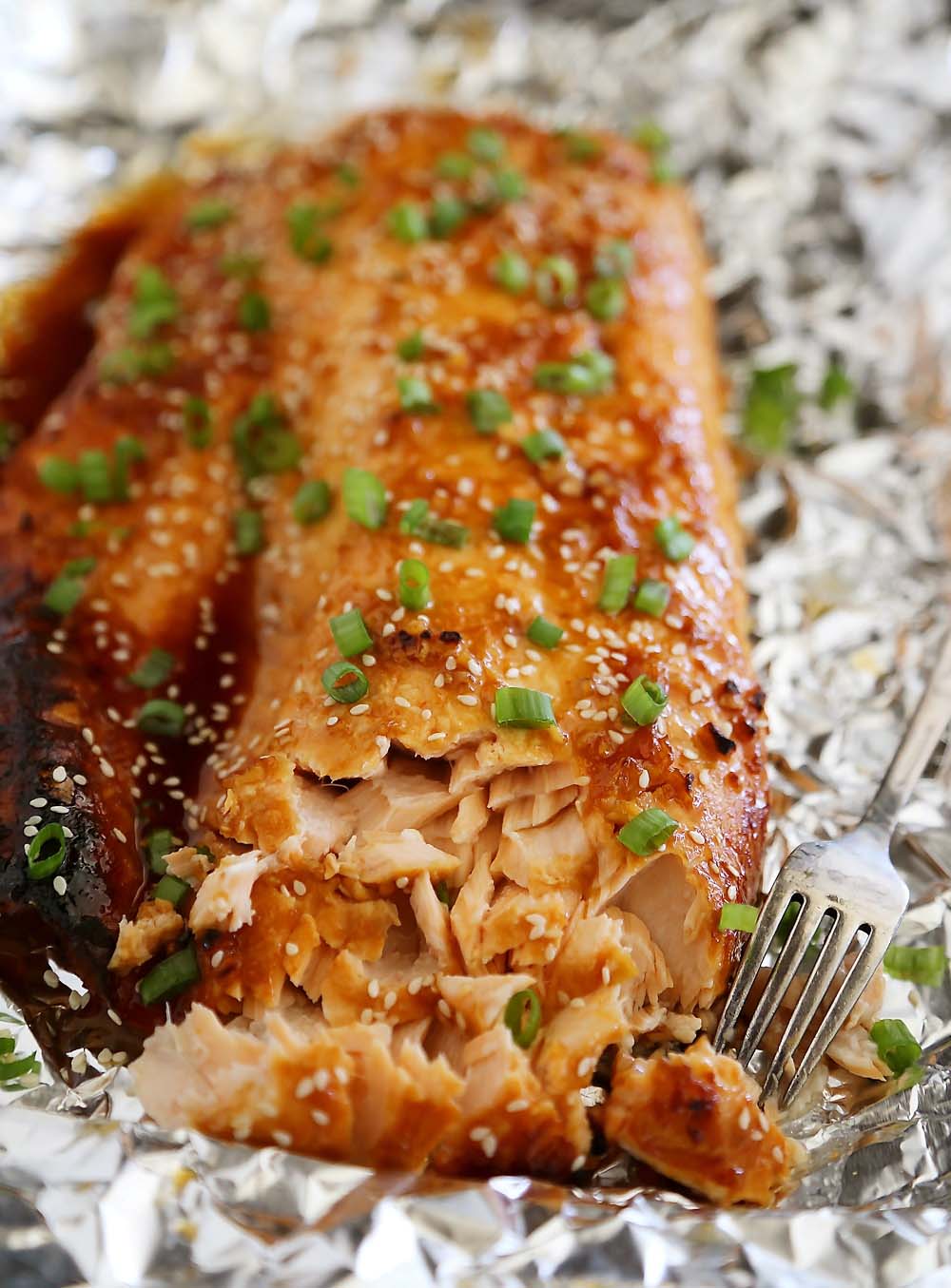
One study published in JAMA in 2005 compared the Atkins Diet with the Ornish Diet, Weight Watchers, and the Zone Diet for weight loss and risk of heart disease. The authors conducted a one year randomized control trial on the dietary components of the Atkins, Zone, Weight Watchers, and Ornish plans with the goal of identifying the effectiveness and sustainability of these diets for weight loss and cardiac risk. The authors concluded: ‘Each popular diet modestly reduced body weight and several cardiac risk factors after one year. Overall dietary adherence rates were low, although increased adherence was associated with greater weight loss and cardiac risk factor reductions for each diet group.’ The takeaway message is that it’s important to find something that you can sustain if you are looking for long-term results.
The second thing to consider is that nutrition is not one size fits all. A person’s nutritional needs vary from person to person. In determining what works best for each you, start with identifying your goals. If you have heart disease and certain religious beliefs, they you may do better on a vegan plan but a person trying to improve fatigue, digestive issues, or decrease inflammation may do better with a paleo approach. It’s also important to consider genetic predispositions, food sensitivities, macronutrient requirements, timing of meals, the status of your microbiome, hormones, nutrient deficiencies and your relationship with food.
If you have heart disease and certain religious beliefs, they you may do better on a vegan plan but a person trying to improve fatigue, digestive issues, or decrease inflammation may do better with a paleo approach. It’s also important to consider genetic predispositions, food sensitivities, macronutrient requirements, timing of meals, the status of your microbiome, hormones, nutrient deficiencies and your relationship with food.
When accounting for what nutrition plan is best for you, keep in mind the importance of finding a plan that is sustainable and one that you are able to personalize. The pegan diet can provide a great foundation point to help you accomplish both of these things. Before we dive into the specifics of the pegan diet, let’s review go over some of the research that exists in favor of the vegan diet and the paleo diet.
The Vegan Diet
There is substantial research that demonstrates many benefits associated with eating a vegan diet. The benefits are often far reaching and include lower levels of inflammation, improved cardiovascular outcomes, decreased risk of cancer, increased weight loss, and improved insulin sensitivity.
Foods to Include: fruits, vegetables, legumes, soy, nuts, seeds, plant-based oils, whole grains and dairy alternatives
Foods to Exclude: meat, poultry, eggs, dairy, and fish
Nutritional Considerations: Calcium, Vitamin D, Protein, Heme Iron, Iodine, Glycemic Index/Load, and Sugar Consumption
A vegan diet has been shown to work well for people that have severe Cardiovascular Disease and there is good research to show that it can lead to the reversal of heart disease, however this way of eating does not work for everyone. In fact, I’ve worked with many individuals that feel much better after incorporating lean and clean sources of animal protein back into their diets. Vegans can have a difficult time getting adequate protein, eating low in the glycemic index since most foods include carbohydrates, improving digestive issues, and limiting sugar consumption because there are no sugar recommendations on a traditional vegan diet. Other symptoms that are fairly common include digestive issues, fatigue, anemia, acne, and brain fog.
Other symptoms that are fairly common include digestive issues, fatigue, anemia, acne, and brain fog.
The Paleo Diet
The paleo diet is not as well researched as the vegan diet but it has shown to also reduce risk of disease and lower levels of inflammation. One smaller study identified that following a paleo diet for just ten days led to improved blood pressure and glucose tolerance, decreased insulin section, and improved lipid profiles without weight loss in healthy sedentary individuals. Another 2015 study identified that a paleo diet compared to a diabetes diet for type 2 diabetics helped to improve glucose control and lipid profiles in participants. A 2017 study compared the Mediterranean Diet with a Paleo Diet and found both were effective in lowering levels of inflammation and all-cause and cause-specific mortality.
Foods to Include: Vegetables, Fruits, Nuts, Seeds, Healthy Oils, Dairy Alternatives, Organic Meat and Poultry, Fish, Eggs
Foods to Exclude: Legumes, Whole Grains, Soy, Dairy, Gluten, Processed Sugar
Nutritional Considerations: Calcium, Vitamin D, B vitamins, High in Animal Protein, Inadequate fiber
While the paleo diet restricts a variety of foods it can be effective for improving digestive issues, reducing blood sugar levels, optimizing weight loss, increasing energy levels and improving autoimmune symptoms. Some of the concerns surrounding the paleo diet include not getting enough fiber from whole grains and beans so in order for this diet to work well it requires eating a lot of vegetables and fruits. It’s also easy to overdo the protein, specifically beef, bacon and other kinds of meats. I generally recommend incorporating a lot of fish and lean sources of protein and occasional grass-fed beef. Like vegan diets, many paleo diets and recipes also go overboard on the added sugar. The good thing about paleo is that it restricts processed sugar however you could technically follow a paleo diet and eat honey and maple syrup all day. It’s important to limit any kind of added sugar for best results, including honey and maple syrup.
Some of the concerns surrounding the paleo diet include not getting enough fiber from whole grains and beans so in order for this diet to work well it requires eating a lot of vegetables and fruits. It’s also easy to overdo the protein, specifically beef, bacon and other kinds of meats. I generally recommend incorporating a lot of fish and lean sources of protein and occasional grass-fed beef. Like vegan diets, many paleo diets and recipes also go overboard on the added sugar. The good thing about paleo is that it restricts processed sugar however you could technically follow a paleo diet and eat honey and maple syrup all day. It’s important to limit any kind of added sugar for best results, including honey and maple syrup.
The Pegan Philosophy
While I do not subscribe to one way of eating, there are foundational pieces that work best for most people, regardless of whether you are eating paleo and vegan. The pegan diet is effective for many individuals because it focuses on incorporating commonalities from the paleo and vegan diets that provide a solid nutrition foundation. The basic principles from the pegan diet that are universally important include: eating whole foods that are minimally processed, limiting added sugar intake, ramping up on vegetables, and eating a diet high in fiber. The other advantage of this plan is that it’s less restrictive than paleo and vegan diets.
The basic principles from the pegan diet that are universally important include: eating whole foods that are minimally processed, limiting added sugar intake, ramping up on vegetables, and eating a diet high in fiber. The other advantage of this plan is that it’s less restrictive than paleo and vegan diets.
Vegetables and Fruits: The pegan diet is all about the produce, with the majority of foods coming from non-starchy vegetables, starchy vegetables. Fruits are also encouraged as this is a great way to get antioxidants and polyphenols into your diet but don’t overdo it with the fruits.
Meat & Eggs: Include high quality meat and eggs. The recommendations are to consume lean, organic poultry and grass-fed and organic meat and organic eggs. The quality of these foods makes a big difference on inflammation, digestion and disease outcomes. Limit to a palm size with your meal.
Gluten-free: Like the paleo diet, the pegan diet is based on the avoidance of all gluten which is found in wheat, barley and rye.
Dairy Alternatives: Like the vegan and paleo diet, the pegan diet promotes avoidance of or limited quantities of dairy products. This includes milk, cheese, yogurt, cottage cheese, sour cream and butter. Instead you can try incorporating almond yogurt (unsweetened), coconut milk, almond milk and cashew cheese.
Whole Soy Foods: Edamame and tofu are staples in many vegan diets but they are not included in paleo. The pegan diet does include soy if it comes from whole, unprocessed sources like tofu, tempeh, miso or edamame.
Incorporate Omega-3 Rich Seafood: This includes foods like wild salmon, herring, cod, oysters, etc. Try to avoid fish that are high in mercury such as tuna, orange roughy, and swordfish.
Limit Legumes: Like vegan diets, legumes are incorporated but in smaller portions. This includes lentils, black beans, chickpeas, kidney beans, hummus, etc.
Gluten-Free Grains: Contrary to the paleo approach, whole grains are included in a pegan diet but only gluten-free grains.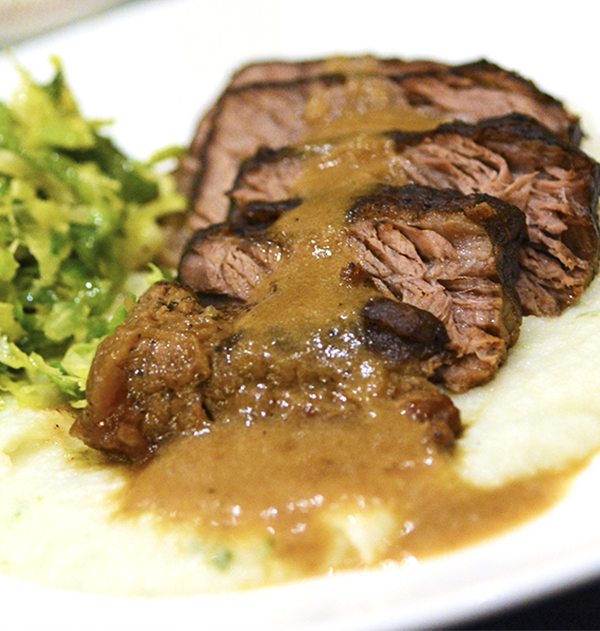 That means incorporating foods like quinoa, brown rice, black rice, buckwheat, gluten-free oats, amaranth, and more. Gluten-free whole grains are preferred!
That means incorporating foods like quinoa, brown rice, black rice, buckwheat, gluten-free oats, amaranth, and more. Gluten-free whole grains are preferred!
Limited Added Sugar: Unlike the paleo and vegan diet, the pegan diet hones in on both processed and unprocessed sugars, recommends to limit consumption of both.
For more information on the pegan diet, watch my presentation from last year on the pegan philosophy.
The Paleo Diet | Sports Medicine & Training Center
Over the past few years the popularity of the Paleo diet has increased, and a lot of questions have arisen as to whether this is a beneficial lifestyle to follow.
Part of the reason for the controversy is that each leading advocate of this diet offers a slight variation to the definition, so it has become hard to answer the question What is a Paleo diet? Is it low carb? Low fat? Does it include dairy? Grains?
Before we answer that, let’s back up to the theory behind the diet.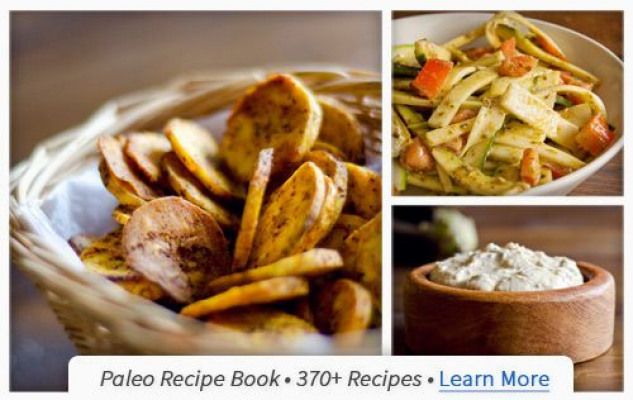 The Paleo way of eating is based on the notion that for optimal health, modern humans should eat in a way that mimics how our hunter-gatherer ancestors ate, hence the term “Paleolithic.” The Paleo logic is that evolution takes a very long time, and modern digestive systems still aren’t adapted to handle the foods that were introduced into our diets post-agricultural revolution. By following Paleo principles, it is hoped that modern humans can reduce the emergence of conditions such as obesity, heart attacks and autoimmune diseases.
The Paleo way of eating is based on the notion that for optimal health, modern humans should eat in a way that mimics how our hunter-gatherer ancestors ate, hence the term “Paleolithic.” The Paleo logic is that evolution takes a very long time, and modern digestive systems still aren’t adapted to handle the foods that were introduced into our diets post-agricultural revolution. By following Paleo principles, it is hoped that modern humans can reduce the emergence of conditions such as obesity, heart attacks and autoimmune diseases.
The dietary tenants that the Paleo community agrees upon are that humans should be eating whole, unprocessed, nutrient-dense foods. A priority should be placed on eating animal proteins such as meat, eggs, fish and seafood, fruits, vegetables, and healthy fats including olive oil, avocado, and coconut products. Starchy carbs such as sweet potatos or yams, as well as nuts and seeds are advised to eat in moderation. The followers of a Paleo diet are encouraged to avoid foods that harm us by causing systemic inflammation and disrupting our digestive enzymes.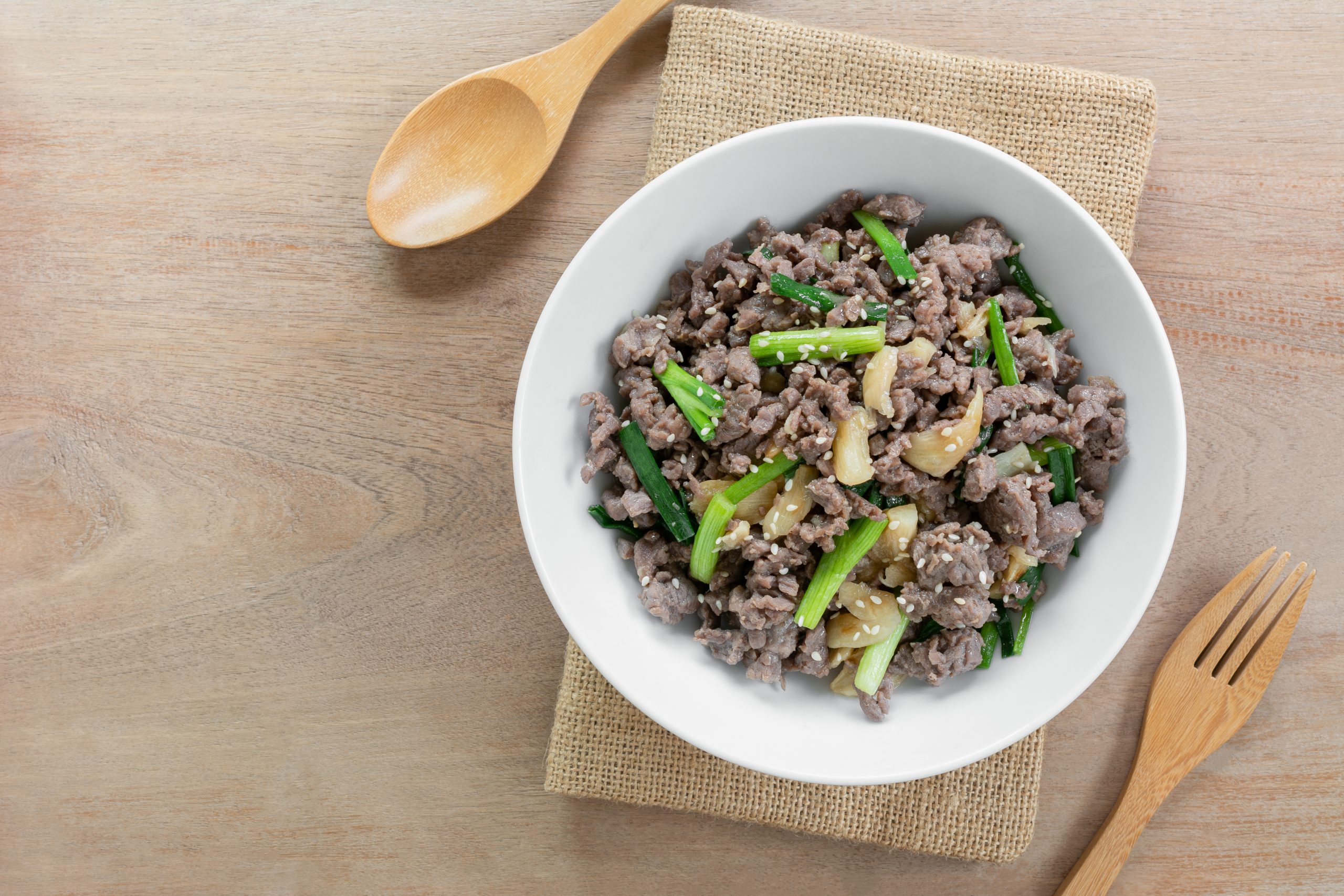 These anti-nutrient containing foods include all processed sugars and industrial seed oils, legumes, soy, and gluten-containing grains. Some followers of the Paleo diet also avoid alcohol and dairy.
These anti-nutrient containing foods include all processed sugars and industrial seed oils, legumes, soy, and gluten-containing grains. Some followers of the Paleo diet also avoid alcohol and dairy.
Contrary to some misconceptions, eating Paleo doesn’t necessarily mean eating a low-carbohydrate diet (that would be called a ketogenic diet). Carbohydrate consumption should support the energy levels dictated by your lifestyle. Each person’s genetic makeup is so different such that some people thrive on a low-carbohydrate approach, whereas others, especially athletes, are encouraged to support their energy needs with sources of carbohydrate such as sweet potatoes and even rice.
For many dieters, the reasoning behind limiting carbohydrate intake is that consuming sugar stimulates insulin secretion, resulting in a subsequent reduction of blood sugar and the feeling of hunger. In addition to fewer hunger pangs, many low-carb dieters report losing weight very quickly in the early stages of their diet. This weight loss occurs because without ingesting carbohydrate, the body uses its existing carbohydrate stores (i.e. glucose and glycogen) for energy. The elimination of stored carbohydrate carries with it an elimination of water, hence the weight loss. Perhaps for a sedentary individual, a meal composed of meat, vegetables and nuts is appropriate.
This weight loss occurs because without ingesting carbohydrate, the body uses its existing carbohydrate stores (i.e. glucose and glycogen) for energy. The elimination of stored carbohydrate carries with it an elimination of water, hence the weight loss. Perhaps for a sedentary individual, a meal composed of meat, vegetables and nuts is appropriate.
However, for the athlete in particular, it is important to consider function when we try to improve health. For this very reason, the optimal diet is very dependent upon the individual. Let’s use a CrossFit athlete (a community known to promote the Paleo way of eating) as an example. The programming followed by CrossFit stresses the glycolytic and phospagenic energy systems, and aerobic adaptations occur on top of these. Glycolysis (how the body produces energy for efforts lasting 30 seconds to 2 minutes) can only be fueled by carbohydrate, the phosphagen energy system (less than 30 seconds) relies on high-phosphagen foods like meat, and the aerobic system (longer duration workouts) is unique in its ability to utilize fat as energy. Therefore, it is clear that for optimal performance, the CrossFit athlete needs to have a diet that provides a moderate amount of each macronutrient: carbohydrate, protein, and fat.
Therefore, it is clear that for optimal performance, the CrossFit athlete needs to have a diet that provides a moderate amount of each macronutrient: carbohydrate, protein, and fat.
And just as the CrossFit athlete differs from the endurance runner, so too is each person encouraged to take an individual approach to eating, within the general guidelines of Paleo eating. The Paleo diet dictates that you eat real food, nourish your body, and avoid toxins. But don’t forget that a diet is not one-size fits-all. Consider your own lifestyle, experiment, and then observe. Perhaps after removing all processed foods, you see the disappearance of those nagging stomach or joint aches. Or maybe you feel more balanced following these dietary guidelines just 80% of the time. Whatever the case, you may find that the optimal diet for your health lies somewhere along the lines of the Paleo spectrum.
So to put this into practice, what would a day of Paleo eating look like for an athlete?
Breakfast:
Eggs scrambled in some coconut oil or olive oil with sautéed vegetables
Some fruit (bananas, strawberries, etc. )
)
Coffee (yes, it’s paleo)
Post-workout (whenever this falls during the day):
Either a small meal or shake of carbs and protein
Lunch:
Large mixed-green salad with vinaigrette dressing,
Topped with grilled chicken, dried fruit, and walnuts
Snack(s):
Dried fruit, jerky, or nuts
Banana
Dinner:
Salmon filet
Roasted vegetables with olive oil
Sweet potato or rice
90,000 diet – the first step to a healthy life
Ekaterina Grigorieva (Katya Yang) ,
practicing endocrinologist, author of the methodology for improving the body Fundamenta
Paleoprotocol is perhaps the most comfortable nutritional strategy for optimizing health. It is suitable for everyone who does not have any special health complaints, but also does not want problems with it in the future. This diet is worth trying as an initial step in nutrition.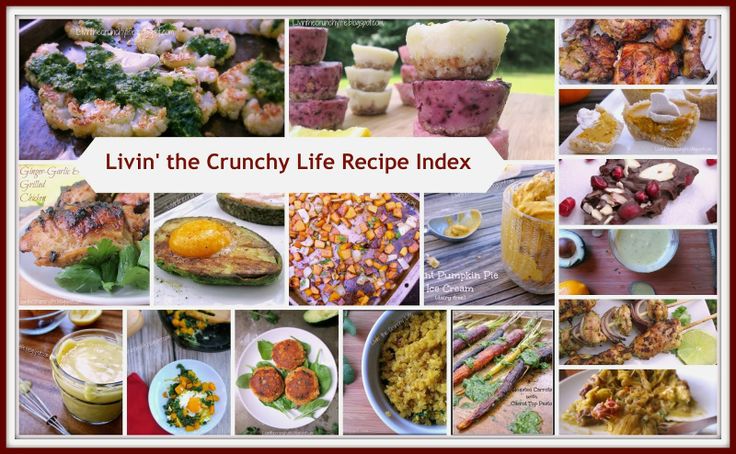
The Paleo Diet is primarily whole foods without processed foods and processed foods.
50% of the daily calorie intake should be from plant foods and 50% from animal foods (¼ plate – meat or fish, the rest vegetables).
How the Paleo Diet Affects the Body
WHAT IS ALLOWED on paleo-protocol
- Offal, bone broth, jellied meat
- Red meat and poultry – up to 2 servings per week
- Fish and caviar
- Seafood
- Eggs
- Gluten-free cereals and pasta – in moderation
- Algae
- Greens and all vegetables, except nightshades
- Pickled vegetables
- Berries and fruits (citrus emphasis)
- Seeds and nuts (pre-soaked in acidified water)
- “Fatty” fruits: avocados, olives, coconut and coconut products
- Fats and oils: avocado, coconut, olive, butter, ghee, hemp, flaxseed, walnut, lard, animal fat
- Herbs and Spices
- Herbal teas
- Fermented drinks: kombucha (kombucha), cabbage, beet kvass
WHAT IS PROHIBITED on paleo-protocol
- Gluten-containing cereals (rye, wheat, barley, spelled, couscous, bulgur, spelled, kamut, semolina)
- All dairy products, except butter and ghee
- Legumes
- Solanaceae (tomatoes, eggplants, paprika, chili peppers, cayenne peppers, potatoes, goji berries, physalis), mushrooms
- Soy
- Vegetable oils rich in omega-6 fatty acids (sunflower, corn, sesame, pumpkin)
- Sugar and all sweeteners
- Coffee, tea, alcohol
Sample Paleo Diet
- Breakfast
– omelet with coconut or almond milk with shrimps
– large portion of salad greens, cucumbers, avocado with olive oil, lemon juice and grated ginger dressing with a handful of pine nuts - Lunch
– borscht on bone beef broth (instead of potato-root celery) with meat and a piece of bacon
– a portion of grilled starchy vegetables: zucchini, carrots, onions, pumpkin, sweet potato (optional) with chicken breast on grilled marinated in herbs and lemon juice - Dinner
– jellied meat and a portion of sauerkraut with olive oil - Dessert
– any low fructose fruit, berry serving or chia pudding made from coconut milk with berries
Paleo protocol without doctor’s supervision is allowed for 3-4 weeks.The question of further passing the protocol is decided by the attending physician, possibly the appointment of nutraceutical support. After the completion of the protocol, the diet can be expanded taking into account food tolerance and observing the principle of rotation in the diet.
What is AIP, or Autoimmune Protocol
According to statistics, every fifth inhabitant of the planet has an autoimmune disease.
AIP is part of the paleo diet, a stricter version of it. It is a therapeutic nutritional strategy justified in autoimmune pathology; it gives stable remission in diseases such as rheumatoid arthritis, multiple sclerosis, ulcerative colitis, systemic lupus erythematosus, celiac disease, fibromyalgia, psoriasis, type 1 diabetes mellitus, allergies, vitiligo.
AIP nutrition, sleep, physical activity, and stress tolerance can help reduce the autoimmune attack, alleviate symptoms, and achieve remission.
The essence of the autoimmune protocol is the exclusion from the diet of foods that support inflammation and autoimmune aggression, and the use of foods that normalize and maintain gut health, are building blocks for new cells and hormones, a source of vitamins, trace elements and antioxidants that suppress inflammation.
The AIP attaches great importance to non-food health strategies, namely: normalization of circadian rhythms (stay up until 23 o’clock) and work with stress.
How long do you need to be on AIP
On your own – no more than 3-4 weeks. This is a treatment protocol that, if used for a long time and without nutraceutical support, can provoke stress on the body. AIP for long-term use requires correction by a doctor.
At the end of the protocol on the basis of rotation (AIP-reintro) prohibited products are introduced and the reaction of the organism is recorded.
What results can be achieved
The result depends on the disease, on its duration, how aggressive it is, and what triggers triggered this condition. On AIP, you can get remission, slow down the progress of the disease, or improve the quality of life.
For example, Dr. Sarah Ballantyne lifted herself out of a wheelchair with a history of multiple sclerosis and Hashimoto’s autoimmune thyroiditis. It was she who shaped her experience into a special diet.
| |||||||||||||||||||||||||
Are Paleo Diet Supporters Right to Believe Legumes Are Bad for Health?
Every meal has its pros and cons.Whether this is great for you is up to you. Here are a few things to consider:
Legumes contain protein, carbohydrates, and a range of vitamins and minerals. However, whether they are good sources of these nutrients for you depends on whether your body can absorb the nutrients from them without a deficiency that outweighs the amount of nutrients. An obvious red flag would be if you were allergic to a certain bean or peanuts, for example. This would clearly outweigh any potential benefits.
The disadvantage of legumes is that they have a high carbohydrate-to-protein ratio, are not as dense as high carbohydrates, and protein is generally one of the major limiting factors in a healthy diet. (That is, regular protein-rich foods tend to be more expensive than regular carbohydrate-rich foods, all other things being equal. Exotic imported fruits can be expensive too, but they are not common. ;-)) If you engage in a lot of physical activity activity, this may not be a minus for you, but a plus.So it depends.
However, legumes are also rich in lectins and other substances that are toxic to humans. Again, pros and cons: lectins, phytases, protease inhibitors, enzyme inhibitors, etc. are common in foods, but it may be wise to avoid the most concentrated sources and / or prepare foods that contain them in a way that reduces, neutralizes or minimize bad things. With legumes and grains, this means you have to cook them properly (the traditional ways), soaking them overnight (lentils may not take that long), even changing the water a couple of times and soaking them longer.In addition, adding acid, such as lemon juice or vinegar, to the soaking water is also beneficial (a couple of teaspoons per liter of water is sufficient). In addition, some legumes, such as lentils, germinate well, which also includes soaking overnight, then draining and rinsing two or more times a day until shoots appear. They will be more easily digestible than regular cooked lentils, and sprouting significantly increases the amount of nutrients. It is also speculated that the starch in dried legumes is converted to a more digestible form when the seeds germinate, essentially converting the legumes into a kind of vegetable in terms of digestion.(I can’t tell if this is true, but it seems plausible.)
The most digestible way would be to soak, sprout, and then cook the beans before eating. Try soaking and / or sprouting and see if that makes the legumes more digestible for you. This is especially important for beans, especially garbanzo and beans, which are more difficult to digest and are not recommended for sprouts. (Some beans are toxic raw, and most of them cause stomach pain!) Don’t worry about soybeans, which are so allergenic and difficult to digest, and have many other disadvantages that outweigh their high protein content.(Even many vegetarians and vegans refuse to approve of soy foods as much as they are accustomed to.) tend to avoid legumes. They usually emphasize the types of foods that people of the Paleolithic era evolved; that is, before the advent of agriculture, arguing that we are best adapted to these products.Believe it or not (I do), some versions of the Paleo diet are a good way to avoid the most problematic foods and get the most nutrient-dense / healthy / nutritious foods in abundance. These include a lot of vegetables, some fruits, especially berries in season, meat, seafood, eggs, some nuts (preferably soaked and dried) and seeds (the same, depending on the seeds), as well as a lot of healthy fats (coconut and olive oils, lard from pasture pigs, butter from pasture – fed grass – cows (made into ghee if you want to avoid dairy proteins altogether), avocados and their oil.Avoid most other oils (all chemically processed industrial seed oils such as soy) oil, sunflower oil, safflower oil, cottonseed oil, canola oil, and anything hydrogenated, and prefer pastoral / herbivore fats (humanely treated) than the fats of grain-eating animals (which are less likely to be treated humanely and receive antibiotics and substandard, unnatural diets for them). “Primitive” devotees can add heavy cream to the coffee.
And many people just don’t want to worry about soaking / sprouting, etc., which are cultural adaptations developed by Neolithic (post-agriculture) people to minimize the decline of legumes and crops. Likewise, sour grains for sourdough and other food fermentation methods have been developed over the centuries to simultaneously preserve food and increase digestibility and, often, nutrients.
For your information, take what vegans say about Paleo with a lot of salt. I have never seen anything written by a vegan or vegetarian about Paleo principles that does not misrepresent Paleo. It’s not all about meat! We don’t all eat a ton of this. In addition, Paleo is now considered a pattern rather than one particular diet by those who know about it, and it includes more serious lifestyle issues than just diet, such as getting enough sleep / avoiding electronics late at night; Normal exercise, including lifting weights, occasional sprints, and frequent low-stress movements such as walking or cycling, but not running too much and stress reduction and relaxation such as meditation.
I would like to see vegans, vegetarians and conscientious omnivores unite around demanding humane animal husbandry practices. It will serve at least some of the goals of all of us, even if it doesn’t turn the vegan world upside down, which it never will. Let us unite for the common good on many principles that we share.
Where I Come From: I am a retired vegetarian, specifically Macrobiotic (who started our work with Diet for a Small Planet when it was first published!), And who began to restore my health when I gave it up and started add animal products, including meat, fats, and pasture eggs included in my diet, and they learned how to cook grains and legumes properly.I have mostly removed grains (I eat white rice occasionally) and I still love vegetables and eat a lot, but I minimize legumes as they don’t feel as good in my stomach. When I decide to eat legumes, I always cook them myself, soaking them at least overnight, if not for a couple of days, before cooking them in bone mass for extra digestibility. And then I keep the portions small. This works for me. See what works for you.
I am not a doctor, but most doctors lack nutritional study or understanding.I’m just sharing what I’ve learned from extensive research and self-experimentation. Your mileage may vary (biochemical personality is real). I am currently studying in the Practicing Diet Therapy training program and I read a lot on nutrition and health and cook for myself (private chef for my elderly parents). I am currently leaning towards Paleo / Primal, but not dogmatically, and owe a lot to the work of Weston A. Price and Frances Pottenger – as we all do!
90,000 What is the paleo diet and what is it eaten with?
No, this is not another express diet and not a fashionable way to deal with extra pounds! The paleo diet is more like a nutritional system, the main idea in a special diet of foods that our ancestors once ate.
How did people eat for several million years in a row, starting from the Paleolithic? Their diet was dominated by meat, a certain set of vegetables and berries, nuts and greens. Over the past several thousand years, with the development of civilization, cereals, flour, dairy products have appeared, and over the past few decades, ready-made processed foods have been added to all this.
The creators of the paleo diet believe a lot of nutritional innovation is hurting us. Legumes, for example, interfere with or remove certain minerals from the body, such as zinc, calcium and potassium; sweeteners increase blood pressure and accumulate carcinogenic substances; Gluten, which is abundant in grains, blocks the absorption of vitamins and can cause fermentation and allergic reactions.That is why, in the paleo diet, these foods are recommended to be replaced with nuts, fruits, vegetables and meat.
Basic rules of the paleo diet:
1. If the meat is lean. The protein it contains helps muscles grow strong, strengthens bones and the immune system, and makes you feel full for a long time. Preference should be given to poultry and game. Eggs may also be present in the diet.
2. “Yes” to healthy fats. It is advisable to include grape, sesame, olive, sunflower and any other vegetable oil in your daily diet.Fat-rich plant foods are also useful: seeds, nuts, avocados.
3. More fresh herbs, vegetables and fruits. Rich in antioxidants, vitamins and minerals, these foods are essential for maximum energy boost. The more varied your diet is, the better.
4. Also on the list of “good” products are seafood and fish cooked in any way, but always without oil.
5. No limitation in quantity. The main thing is to chew your food thoroughly.But those who choose this diet style in order to lose weight should still limit themselves in quantity, adhering to a daily caloric intake of no more than 2000 kl.
6. No sweets or anything that contains added sugar, including sweeteners. The explanation is simple – such food stimulates the appetite and slows down the metabolism.
7. Abstaining from dairy, legumes, grains and other processed foods, which contain artificial additives – they interfere with the absorption of many nutrients.
8. Also on the list of “bad” products is black tea, coffee, alcohol, soda, sweetened juices, semi-finished products, dried fruits, soy and various snacks containing a large amount of salt and artificial additives.
As for the experts, their opinions, as in any other diet, were divided into diametrically opposed ones. Adherents of the paleo diet believe that this nutritional system does not contradict our genetics and therefore will not provoke health problems. Opponents, on the contrary, consider this type of nutrition to be unbalanced.In their opinion, the exclusion of complex carbohydrates, legumes and the predominance of protein in the diet provoke various diseases.
Who will become you – an opponent or a fan of the paleo diet – it’s up to you!
Paleo Diet.
Paleo Diet Philosophy and Practice
There has been a lot of writing about the paleo diet lately, it is becoming a fashionable topic. Perhaps it is an exotic accent (I would say, an exotic “PR” of the paleo diet), and sometimes it seems that this system is programmed for popularity, because it allows everything except … “civilization.”Exactly so: eat what you want and do not deny yourself anything except … “synthetics” and other semi-finished products. You have the right, humans … primitive, cave, “natural” …
In any case, this is how it seems until you begin to delve into and understand that not everything is so simple.
What is the Paleo Diet?
This is a lifestyle based on healthy food choices that our ancestors ate during the Paleolithic period. Of course, this is only a starting point, supplemented by modern knowledge about the nutritional value of certain products.In fact, it is a diet focused on the consumption of natural products of plant and animal origin and the rejection of the synthetic components that civilization brings with it.
Paleolithic or Paleolithic diet is not hungry at all, but quite the opposite. The menu contains a sufficient, if not a large amount of meat, seafood, eggs, healthy fats, and plant foods. There are also prohibitions, these are gluten-containing products, industrial vegetable oils and sugar, as well as everything that is grown and produced using modern methods using “chemistry”.
WHAT CAN I HAVE? Lean meat, fish, fresh vegetables and fruits, nuts, seeds.
WHAT SHOULD BE RESTRICTED? Sugar, gluten-containing products, dairy products, industrial vegetable oils.
WHAT IS NOT CATEGORALLY ? Substandard products grown using “chemistry” and “synthetics”, and semi-finished products.
Let’s deal with this point by point.
Paleo diet – highlights
Always buy only the highest quality you can afford.
Our refrigerator should contain only those products in which we are confident,
that is, grown without chemical fertilizers, not stuffed with toxins, pesticides and antibiotics. It requires strict selection and quality control of what you put on the table. At this point, the paleo diet is similar to the eco diet (although otherwise different).
Avoid grains and legumes
It is especially important not to eat foods containing gluten (gluten), such as wheat, rye, barley.Also avoid legumes – soy, corn, beans, peas, lentils, and peanuts (these are legumes).
Avoid sugar and high carbohydrate foods
This rule applies to any artificial sweetener. Occasionally, you can indulge in natural sweeteners like honey and maple syrup. Creamy sweets and other extravagances are prohibited as junk food.
Limit vegetable oils industrially
This list includes oils from rapeseed, corn, soybeans, sunflower and similar crops.The paleo diet does not impose an absolute ban on vegetable oils. The listed oils can be used in limited quantities.
Don’t be afraid to include healthy fats in moderation in your diet
Recommended low-fat meat. Healthy fats include avocado oil, olive oil, walnut oil, flaxseed oil, grape oil, and ghee. One of the biggest mistakes people make when adapting to the paleo diet is not eating enough fat.Fats, meanwhile, give you a feeling of fullness and keep you energized.
Dairy products
Normally the Paleo diet does not favor dairy products, but sometimes it is okay if you tolerate them well and do not want to give them up.
The only “milk” that in this case should be regularly included in your diet is cream, ghee, and fresh raw milk from a “familiar” cow that lives in the wild and eats pasture. Interestingly, in this Paleo Diet almost completely repeats the recommendations of Indian yogis.
Sometimes high quality cheese can be included in the diet. If possible, purchase dairy products only from a trusted source – a vendor or country lady you can trust. If you are not sure about the quality of milk, it is better to give it up altogether, or at least until you find a decent product.
Is the Paleo Diet Low Carb?
Yes, it is, but with reservations. It really depends on your lifestyle and your goals.There are people who deliberately cut back on their carbohydrate intake in order to attack excess weight more successfully. Depending on your specific needs, you can adjust your paleo diet accordingly. For example, athletes who need carbohydrates can include more starchy vegetables and fruits on their menu – various root vegetables such as regular potatoes, sweet potatoes, yams, pumpkin, or bananas. However, if you do not have the goal of active physical training, it is better to save on carbohydrate vegetables.
In fact, there are endless options for enriching the Paleo Diet menu. You can choose from meat, any seafood, berries, nuts, herbs, herbs, healthy sources of fats, and tons of other useful things. Any combination of this variety opens up scope for delicious and healthy food.
What are the benefits of the Paleo diet?
The paleo diet really does help solve a number of health problems.
1. Possibly helps to lose weight (little research).
2. Stabilizes blood sugar levels.
3. Offers the optimal ratio of omega 3 / omega 6 fatty acids in the menu.
4. Reduces inflammatory processes in the body.
5. Reduces the risk of certain chronic diseases such as diabetes mellitus, osteoporosis, cancer, heart disease (not enough research, but there are encouraging observations).
6. Increases vital energy.
7. Promotes good athletic performance.
Cons of the Paleolithic Diet
Cons, of course, there are also.They exist for two types of people. Firstly, it will not satisfy vegetarians, since plant sources of protein (legumes) are prohibited. Secondly, it can be difficult for athletes who need a lot of calories = carbohydrates. And if the second is a solvable task (it is enough to increase the consumption of fruits and vegetables), then the first is hardly.
In addition, with the paleo diet, a person loses calcium (the restriction in dairy products affects), the recommendation is to take it in supplements in consultation with a dietitian.
Sample menu for a “caveman”
breakfast – assorted fruit salad and a handful of nuts;
second breakfast – 100 grams of chicken breast and 200 grams of fruits or berries;
lunch – a dish of lean beef, a salad of raw vegetables, seasoned with lemon juice and peanut butter;
afternoon tea – a plate of fresh fruit; Dinner
– Iceberg lettuce with cabbage and tomatoes. Grilled trout or any other fish.
15 tips for those looking to switch to the Paleo Diet
1.Get rid of unnecessary products . Before you start eating paleo, get rid of any unnecessary food that is left in your refrigerator or pantry. So you will deprive yourself of the opportunity to break the rules, in case you have not yet had time to fully adapt to the diet.
2. Eat without restrictions! This may seem counterintuitive, because everywhere we hear opposite advice. However, any restriction or prohibition gives rise to a powerful internal protest and a great desire to break these rules.
Trust in the body . When the prohibitions are lifted, food loses its super-significance in our consciousness, and the body itself understands what and how much it needs. The most important thing is to learn to listen to your body, to trust it. Constraints are not important, discipline is.
Calories. Paleo Diet is distinguished by moderate indicators of caloric content of products, so it allows you to eat in sufficient volume, without gaining extra pounds. At the same time, there is no need for constant snacks, from eternal malnutrition while adhering to strict diets.
3. The first two weeks are the most difficult . You may not feel very well because your body is only adjusting to changes in your diet. You may also be overwhelmed by a great desire to eat something from the forbidden set of foods, and this is natural, because each person gets used to a certain pace and rhythm of life. At the beginning of the journey, you can afford infrequent deviations from the principles of paleo.
At the end of two weeks, you will feel much better and no longer want to return to your old way of life!
4.If you’re a beginner, prepare ahead of time.
Develop a preliminary meal plan, and in accordance with it, stock up on the foods you need for the Paleo Diet. At first, this tactic will save you from having to rack your brains over your daily menu.
Focus on purchasing the most time consuming food to prepare – meat, fish, vegetables. If necessary, you can always prepare something in advance, and not worry about what exactly you will have to eat when you return from work.
5. Once a week, take the time to purchase all the necessary groceries on a large scale.
6. Chop and store vegetables in the refrigerator, which can be quickly combined into various side dishes within a week.
7. Always have ready-to-eat ingredients handy, such as hard-boiled eggs, smoked salmon and chicken salad.
8. Cook broths regularly. Use as a base in soups, stews, or drink straight from the cup.The broth is useful for strengthening the immune system and restoring strength.
9. Read the labels! Learn to understand what is written on them.
10. Do not make sudden movements – go to the paleo diet gradually (however, like any other).
11. Add new recipes to your menu once a week. There are many products from which unusual tasty combinations are born. Perhaps you will try some of them for the first time.
12.Leftovers from dinner can always go into breakfast!
13. One of the hardest things about following the paleo diet is the intense social pressures of . This is perhaps the most difficult moment for followers of any diet, not just paleo. Wherever you go, you will be tempted by the wrong food. When ordering food from a restaurant or cafe, try to respect the paleo principles as much as possible.
Or practice this option: before going to the party, have a good meal at home.
14. Buy or make your own ghee infused with garlic. It has long been used in Ayurvedic cuisine instead of butter and is suitable for preparing Paleo dishes for stewing, long frying; Ghee oil can be eaten a little every day with regular food – it promotes good digestion and prevents constipation.
15. Don’t forget to get adequate sleep, walks in the fresh air, and exercise.
90,000 Paleo Chicken – Recipes
Did you find this post helpful, inspirational? save THIS PIN to his blog board to Pinterest . 😉
Did you find this post helpful, inspiring? save THIS PIN to his blog board to Pinterest , 😉
* Today I’m glad my friend Lisa is sharing this healthy paleo dish! Sounds awesome! Thank you Lisa! ~ Amber
Hello! My name is Liza, and I am writing Cooking with Curls … I have a lot of fun in the kitchen! I am very glad to be a part of the month Amber “Healthy, you are healthy”! Although I cut most processed foods from my diet over 9 years ago, there is always room for improvement.This year, I have focused on eating more vegetables and getting rid of the rest of these processed foods. My search for low carb and unprocessed foods led me to several paleo sites. The idea is really intriguing, so I decided to try and share with you this delicious Paleo fried chicken. Don’t run away just yet, you can make it fried, not paleo.
In short, the Paleo Diet is pure food … … as if eaten by a caveman.No processed oils, grains, soy products, or starchy vegetables. I just swapped the coconut amino acids for soy sauce, tapioca flour for cornstarch, and safflower oil for canola oil. Look, it didn’t hurt that much. The results were really better than I expected. Coconut amino acids are not as salty as soy sauce, so the overall flavor of this dish is lighter and vegetables can shine. Serve with cauliflower rice for a perfect, low-carb and healthy meal without sacrificing any of the flavors you like.Enjoy!
Paleo Chicken
- 1/2 cup organic chicken stock
- 4 tablespoons coconut amino acids (can be substituted with soy sauce)
- 1/4 teaspoon crushed red pepper
- 1 teaspoon sea salt
- 1/4 teaspoon freshly ground black pepper
- 2 teaspoons tapioca flour (can be substituted with cornstarch)
- 2 tablespoons safflower oil
- 6 large cloves of fresh garlic, chopped and finely chopped
- 3 slices fresh ginger, peeled and finely chopped
- 1 small yellow onion, cut into very thin strips
- 1 red pepper, peel, sow and cut into thin strips
- 1 large head of broccoli flowers, cut into small pieces, lightly cooked *
- 3 large carrots, sliced and lightly cooked *
- 1 lb. organic chicken breasts, cut into 2 ”long thin strips
- 1 tablespoon sesame oil, toasted (garnish)
- 2 tablespoons toasted sesame seeds (garnish)
In a small bowl, combine chicken stock, coconut amino acids, salt, pepper, pepper flakes and tapioca starch.Set aside.
Heat oil in a large skillet or bake over medium heat. Add ginger and garlic and heat for a minute.
Add onion and cook for 3 minutes, stirring occasionally.
Add pepper and cook for 2 more minutes.
Pull vegetables to the side of the pan and add chicken strips. Cook, stirring occasionally, until well done and no longer pink.
Add broccoli and carrots to saucepan, stir.
Pour the sauce mixture and stir to combine. Bring sauce to a boil and remove from heat.
Serve with rice and sprinkle with sesame oil and seeds.
Note:
* Place broccoli flowers and carrots in a microwave safe container. Add 1 tablespoon water, cover the bowl and microwave for 3 minutes. Drain and reserve.
If you decide to use soy sauce, remove the teaspoon of salt.
Here are some of my favorite healthy recipes:
Follow us
Pinterest!
Paleo Rice of cauliflower
Southwest Chicken Salad with Creamy Lime Cilantro Dressing
Dark cakes with avocado
Did you find this post helpful, inspiring? save THIS PIN to his blog board to Pinterest , 😉 Paleo polished
Did you find this post helpful, inspirational? save THIS PIN to his blog board to Pinterest .😉
90,000 Can tofu replace animal protein?
What is tofu and what is it eaten with?
Tofu is a unique soy product that has a neutral delicate taste and is the basis of many vegetarian dishes. Tofu cubes are served with a variety of sauces, deep-fried and served as a pâté.
There are many questions around tofu. What is soy product useful for and can it replace animal protein?
Let’s see how this unique product is produced.Tofu is prepared from soy milk; for this, acids and a complex of microelements are added to it, obtaining vegetable curd. The fat content of the resulting curd depends on the quality of the soybeans. Tofu is difficult to make at home and can only be obtained from high-protein varieties, which range in protein content from 36 to 42%. Hard tofu has about 10 grams of protein per 100 grams, and soft tofu has a maximum of 5 grams. For comparison, chicken meat contains 25 grams of protein.
How to choose the right tofu?
It is necessary to choose trusted manufacturers, the packaging should be vacuum or sterile closed, sold chilled.
Tofu without additives has a white, even color.
Opened tofu can be refrigerated in clean water for up to a week, and the water must be changed every two days.
When frozen, tofu may turn yellowish or gray.
What types of tofu are there?
We would like to take a look at the most popular tofu varieties, which differ in calorie content, consistency, color, and even taste.
1. Silk (or Japanese) tofu
As the name suggests, this variety has a silky smooth texture that has a delicate, creamy texture.This is because silk tofu contains a lot of moisture and is not pressed like other varieties.
2. Soft Tofu
You’ve probably already heard about this type of tofu, it is most often found on the shelves in stores. It is similar to Japanese tofu, but despite its high moisture content, it does not have a creamy texture. This kind of hybrid between silk and harder variety.
3. Hard or Extra Hard Tofu
Pressed tofu with minimal moisture is ideal for frying, salads and cooking.It is very convenient to use in cooking.
4. Exotic Tofu
Recently, more exotic varieties of tofu have appeared in online stores. Many are made from soybeans with added spices, herbs, and nuts. Interesting view – Black tofu. It actually has a purple color due to the black soybeans. There is also sprouted tofu, which is made from bean sprouts.
How is tofu good for you?
Firstly, it is a natural source of protein, thanks to which the body quickly recovers, strengthens the immune system and increases endurance.Contains 4 g of fat per 100 g of product, which regulates blood cholesterol levels. Tofu is rich in trace elements such as manganese, selenium, phosphorus, copper, iron, magnesium. Researchers have shown that tofu in moderation normalizes hormonal balance and strengthens the reproductive system.
Who shouldn’t use?
Soy protein contains antinutrients that make it difficult to digest food and absorb minerals. Therefore, you should not lean on tofu, it is recommended to use it in moderation.Soy is contraindicated in people with autoimmune diseases.

 Dairy products such as grass-fed butter and ghee are allowed on Paleo.
Dairy products such as grass-fed butter and ghee are allowed on Paleo.
 To learn more about the Whole30 diet and how it’s different from Paleo, read our article here.
To learn more about the Whole30 diet and how it’s different from Paleo, read our article here.